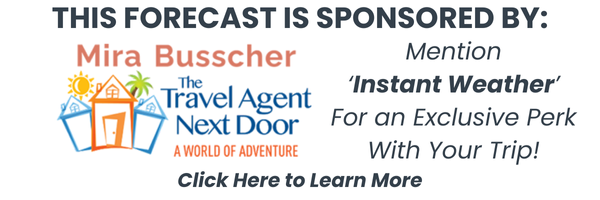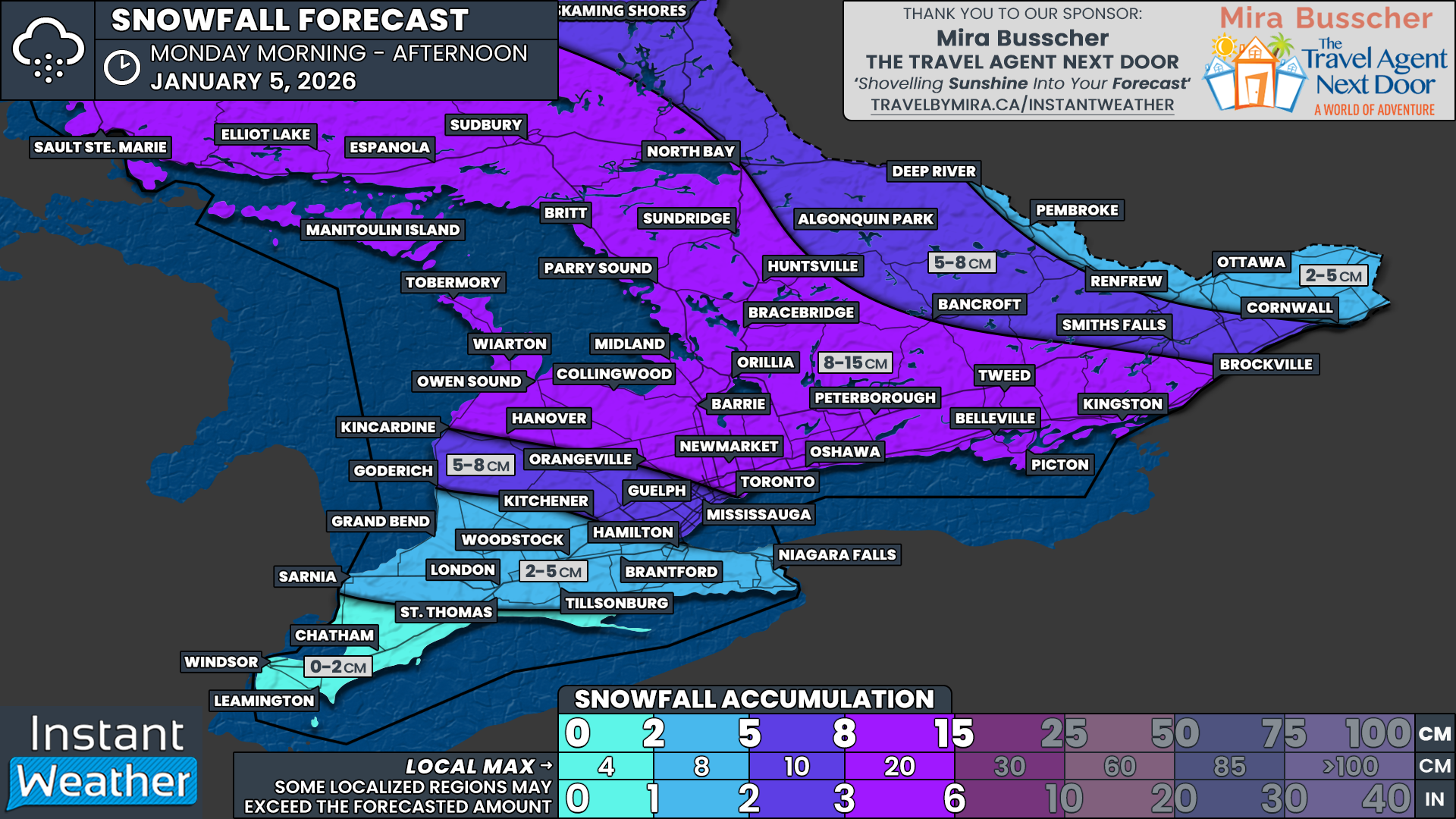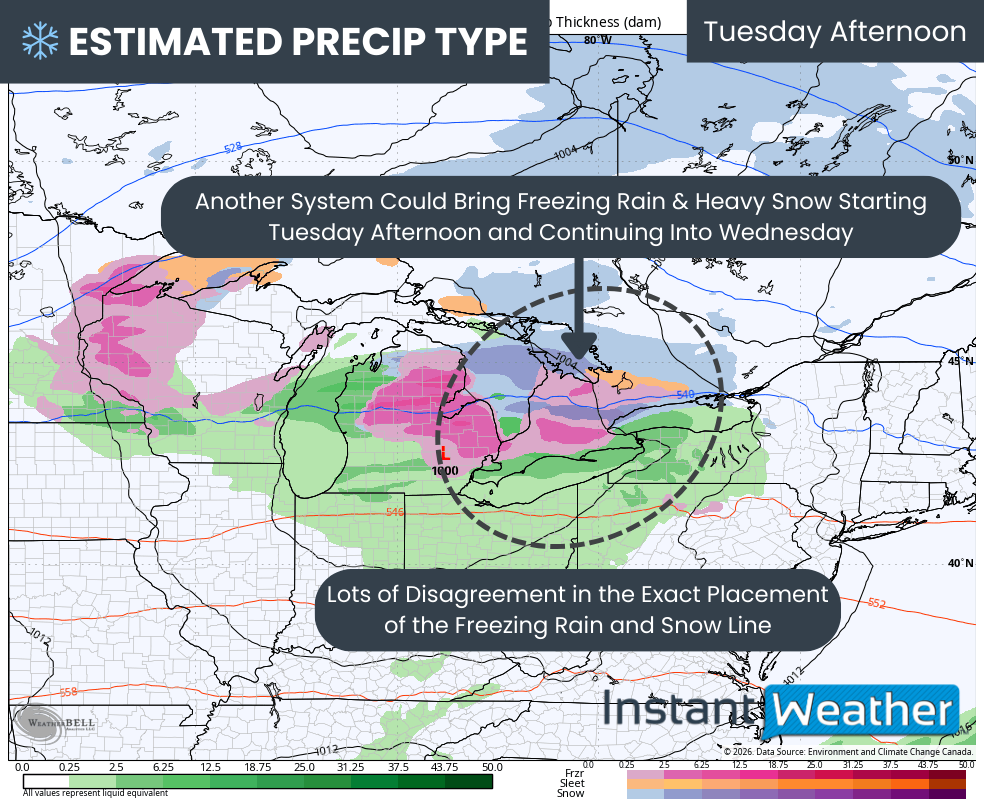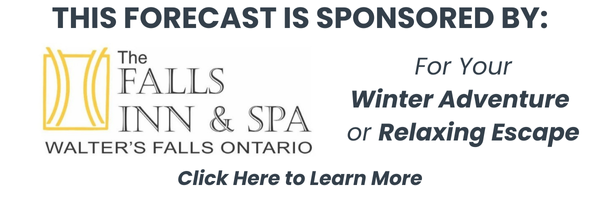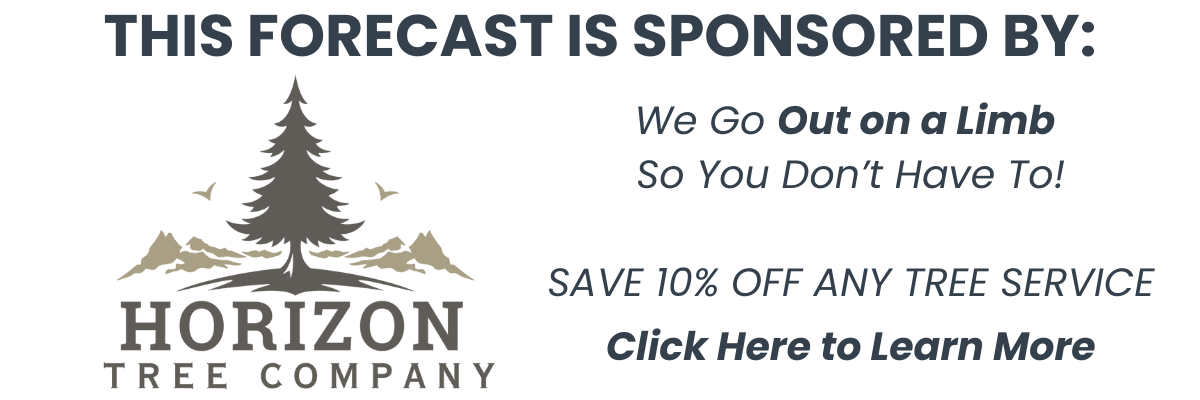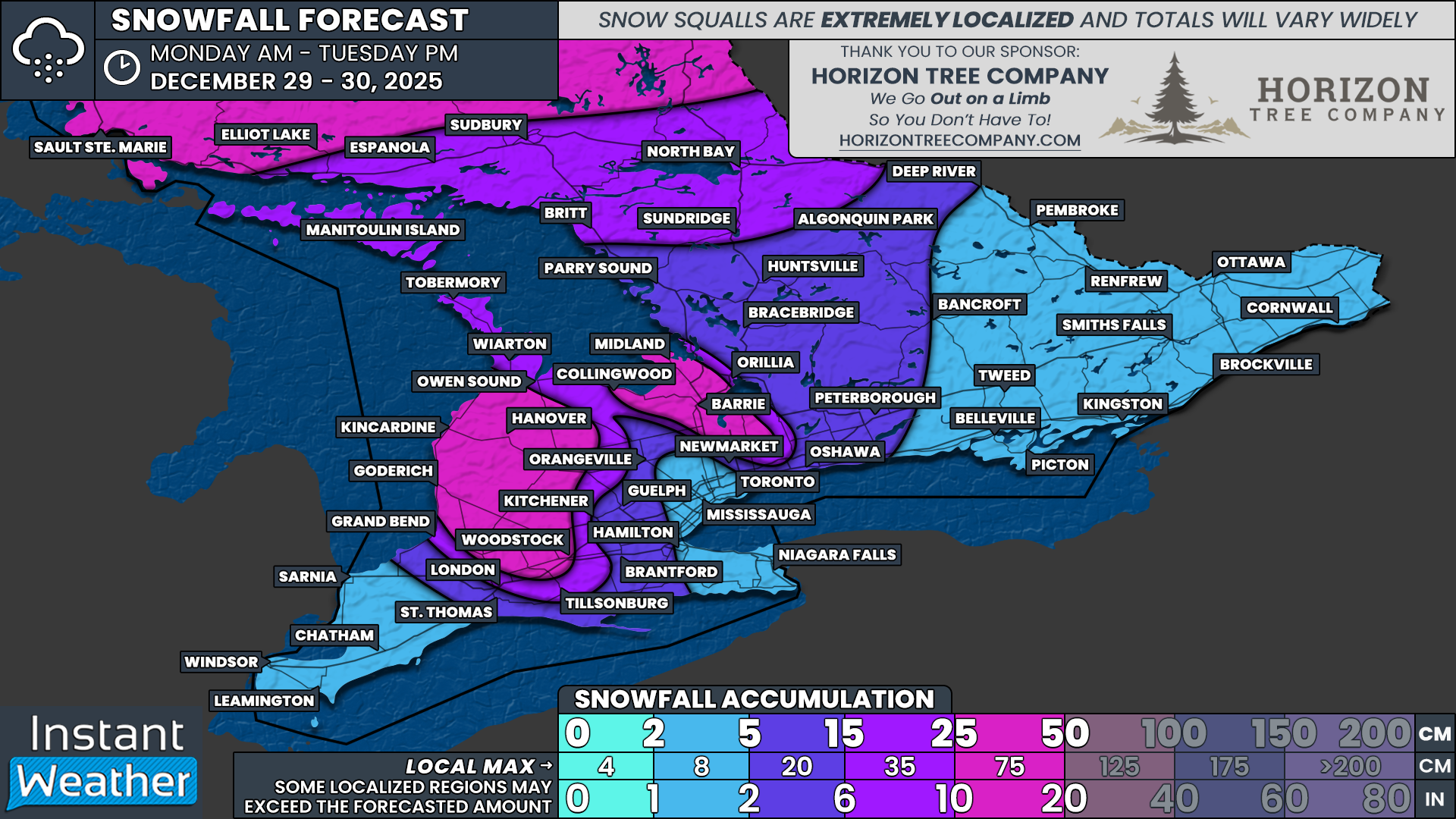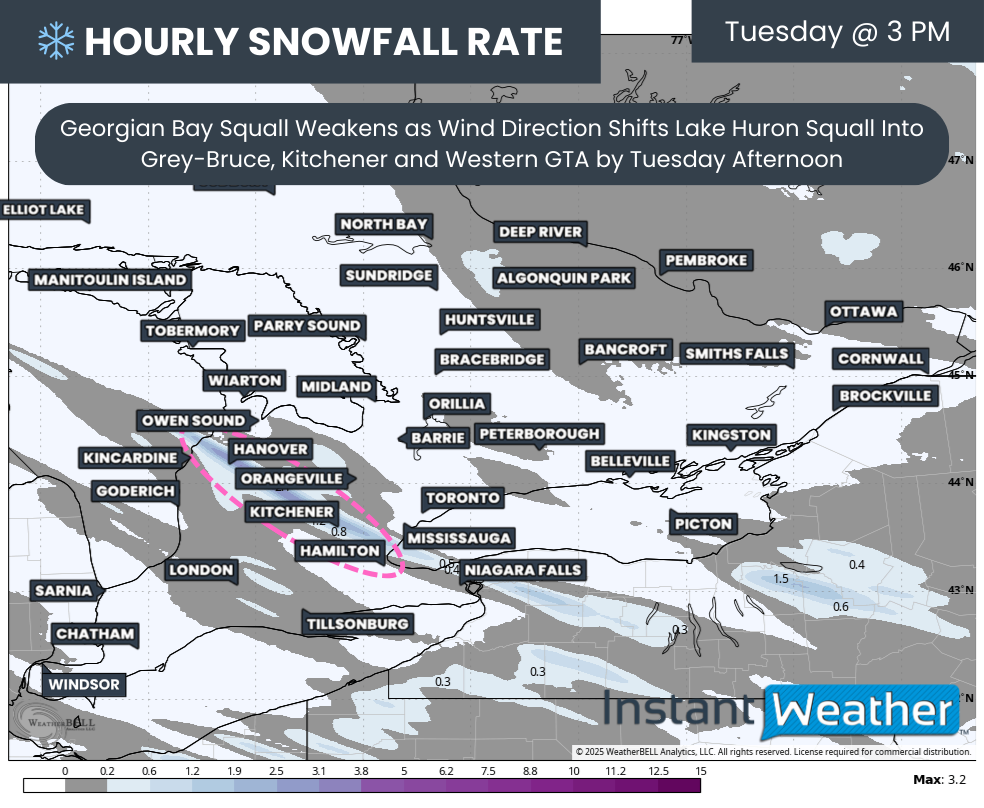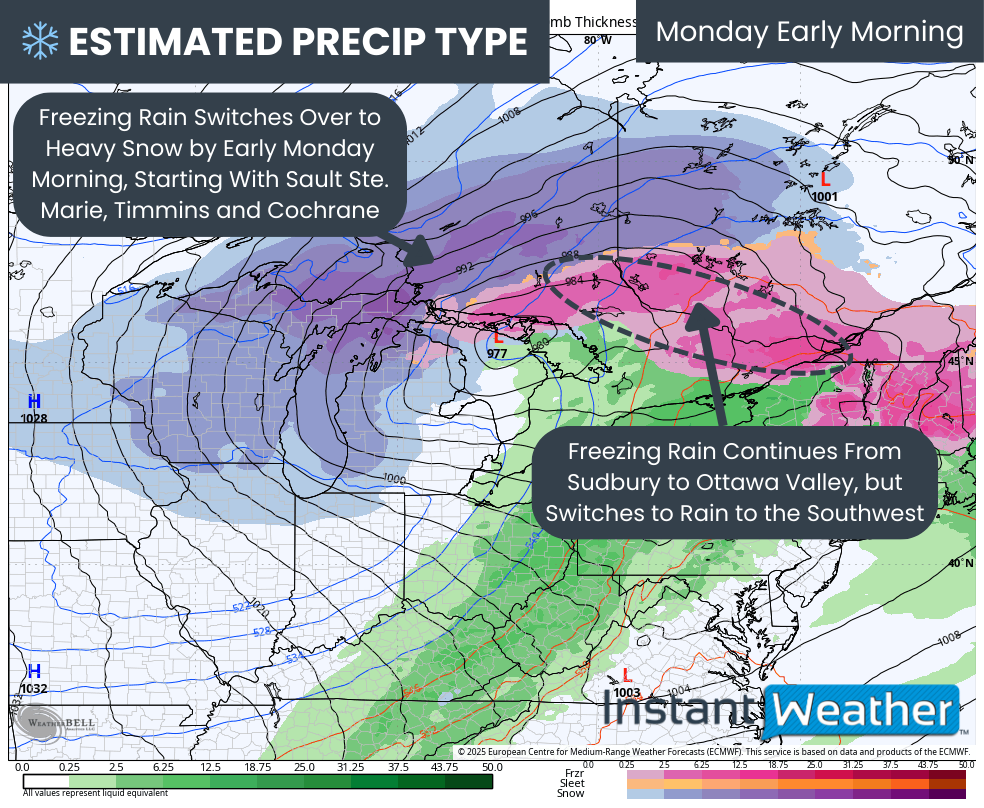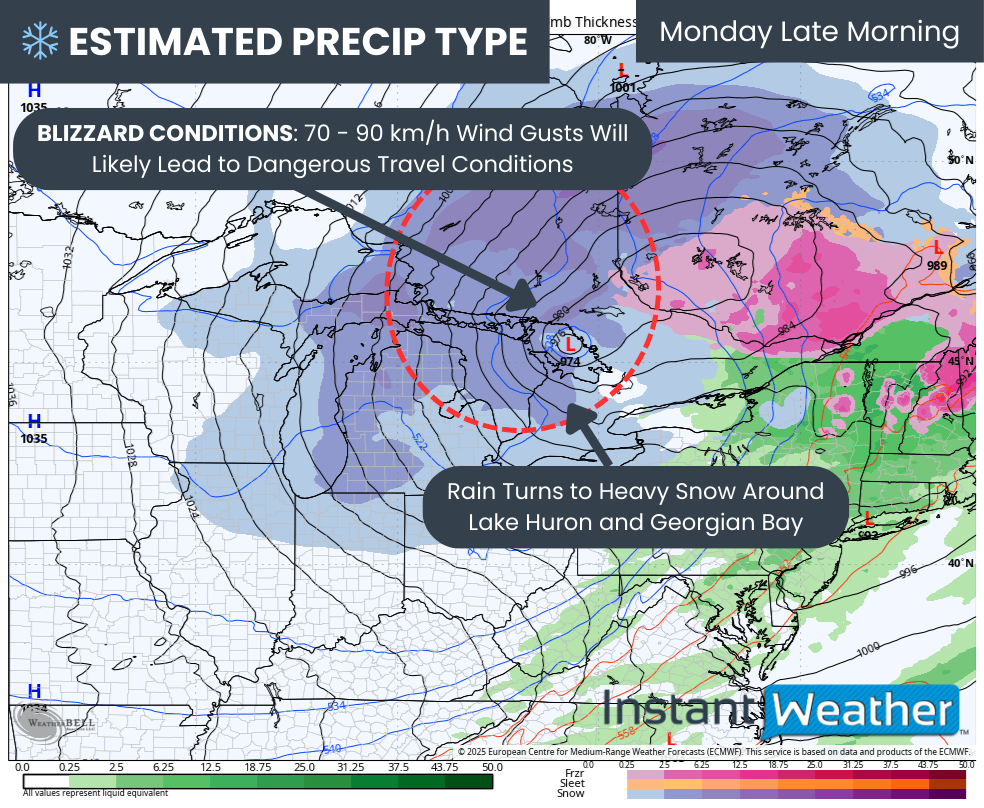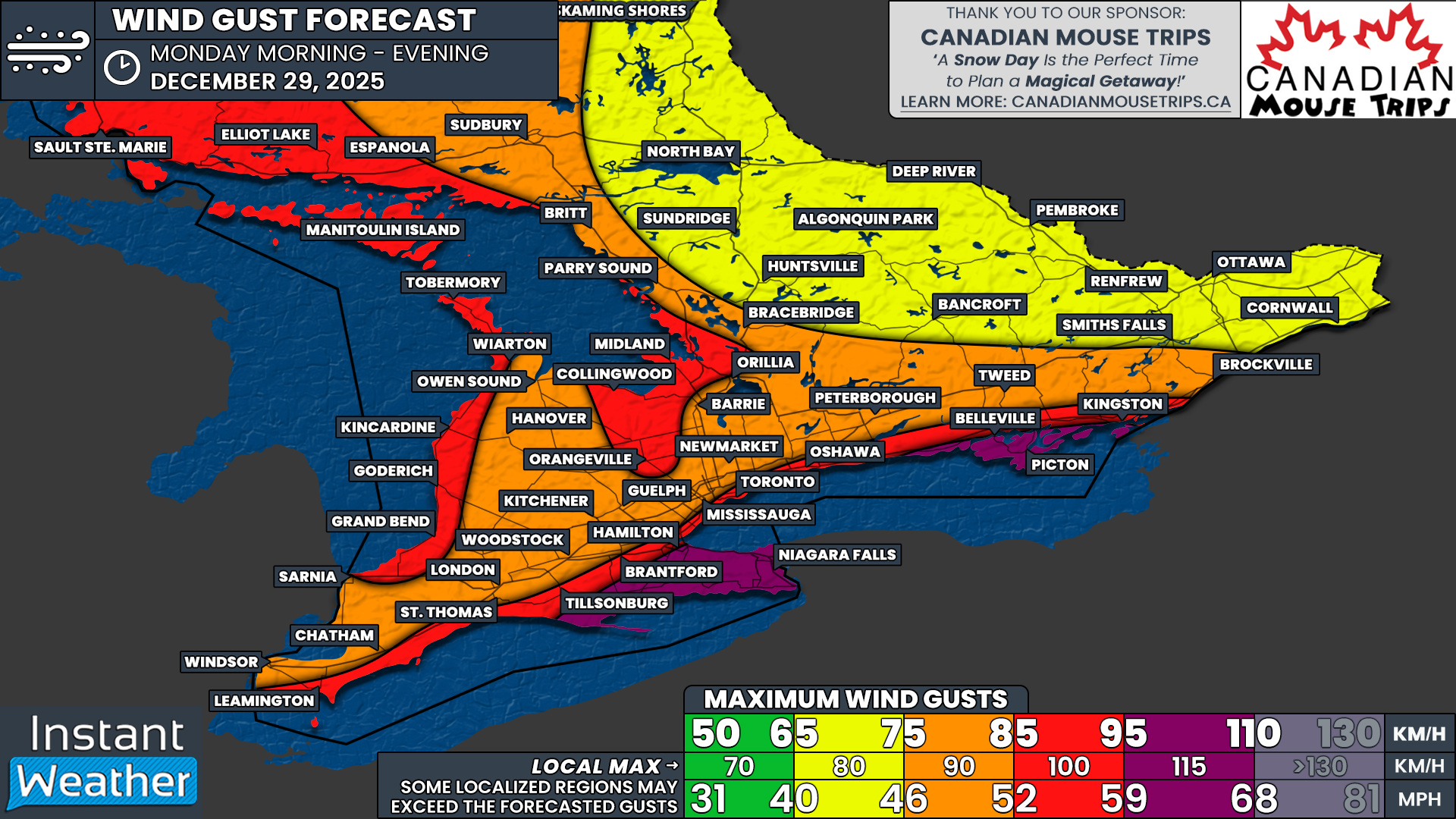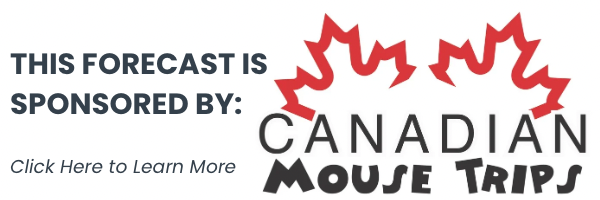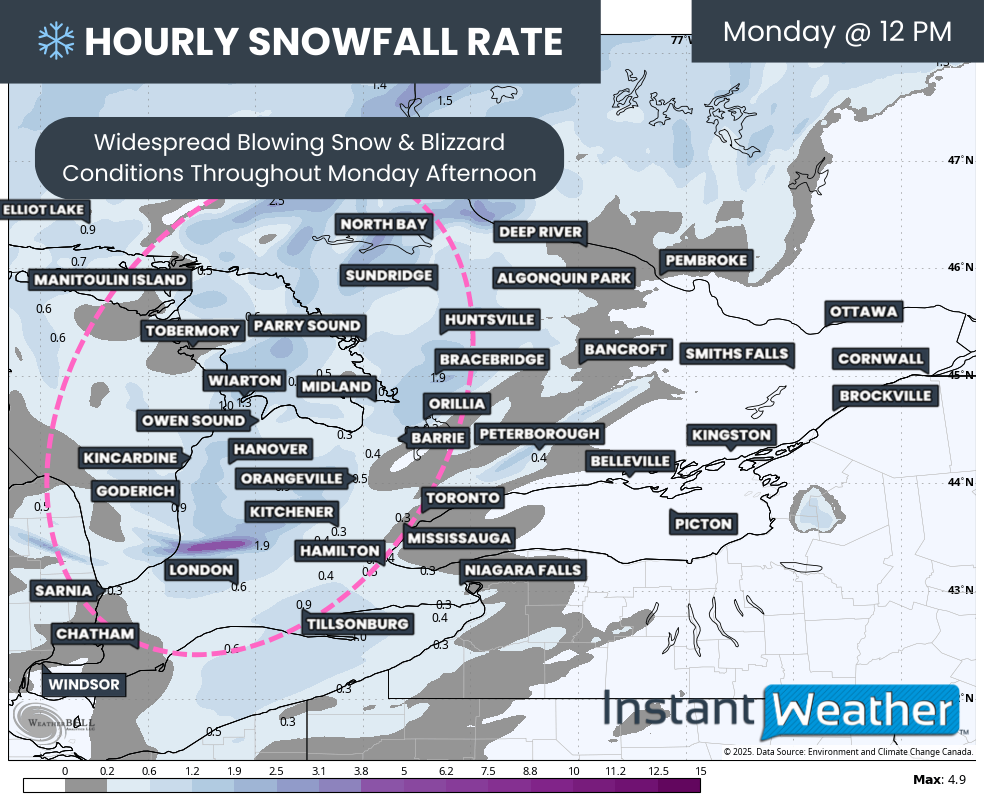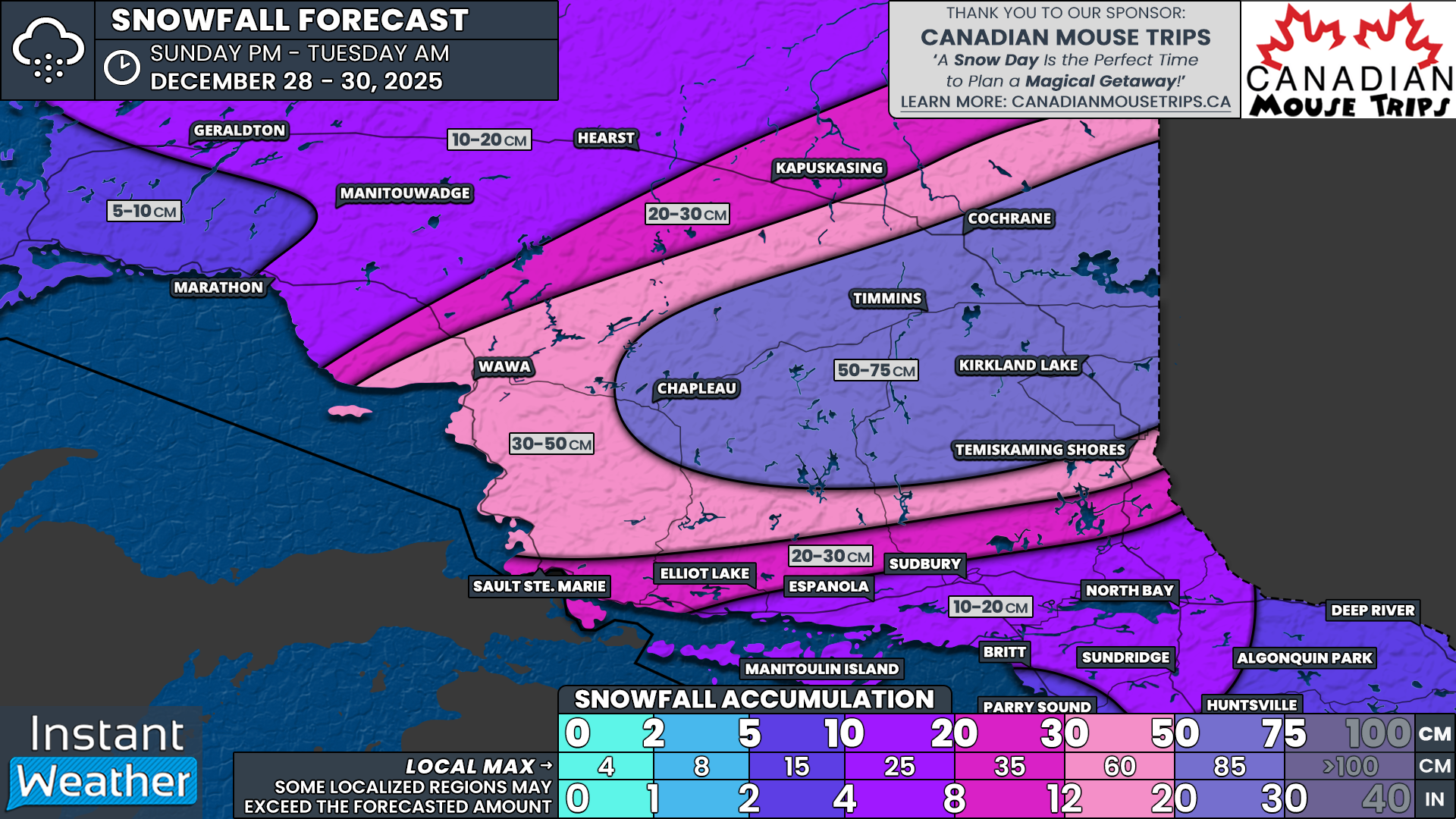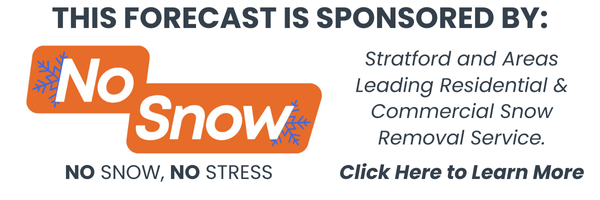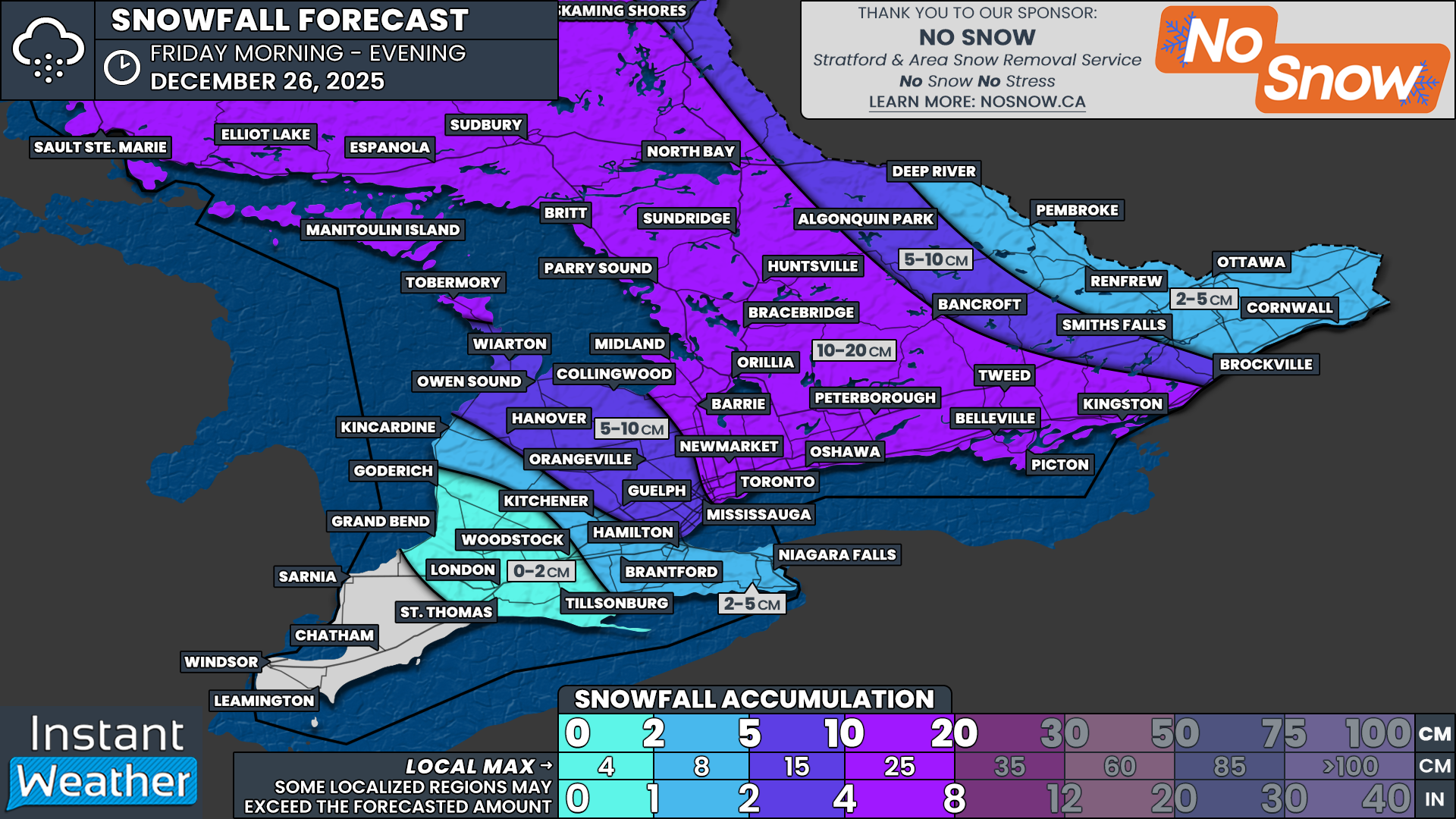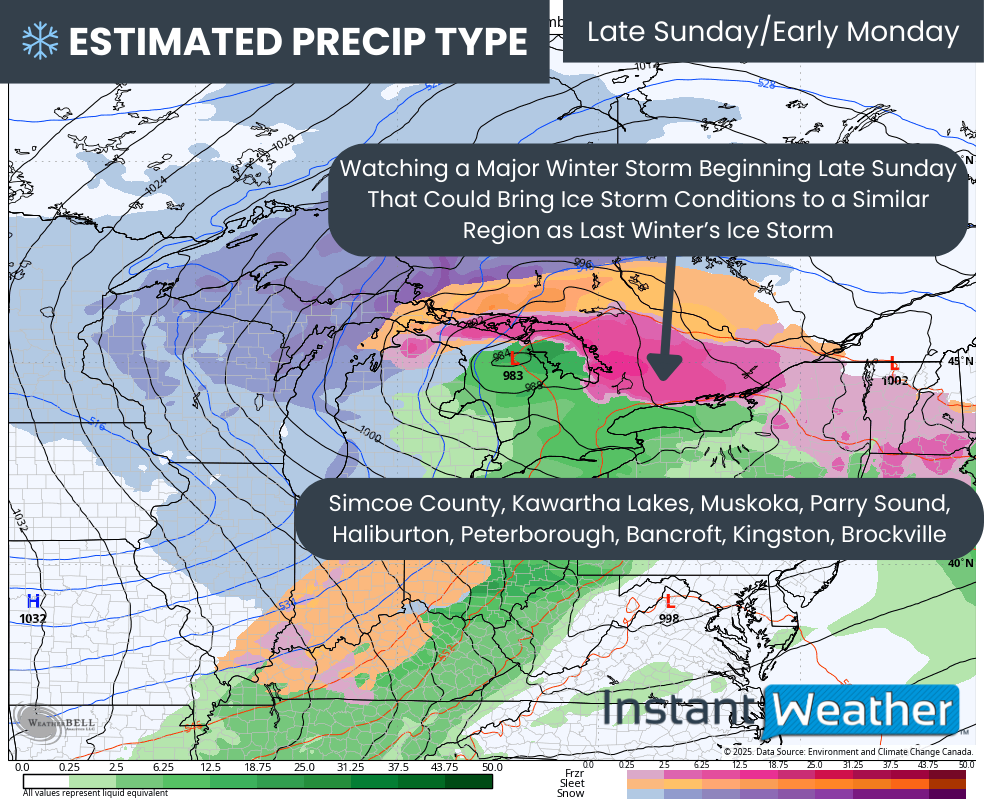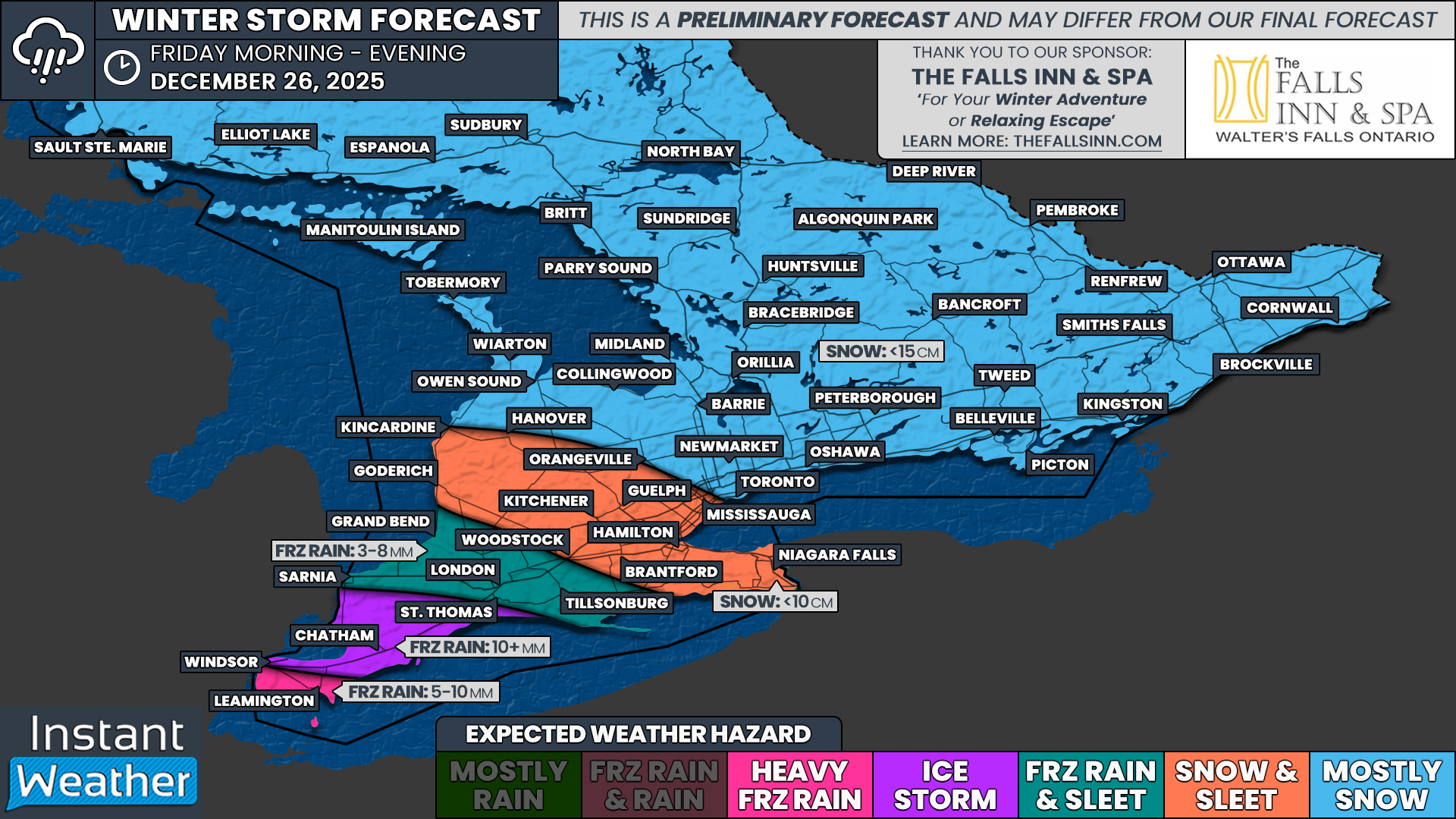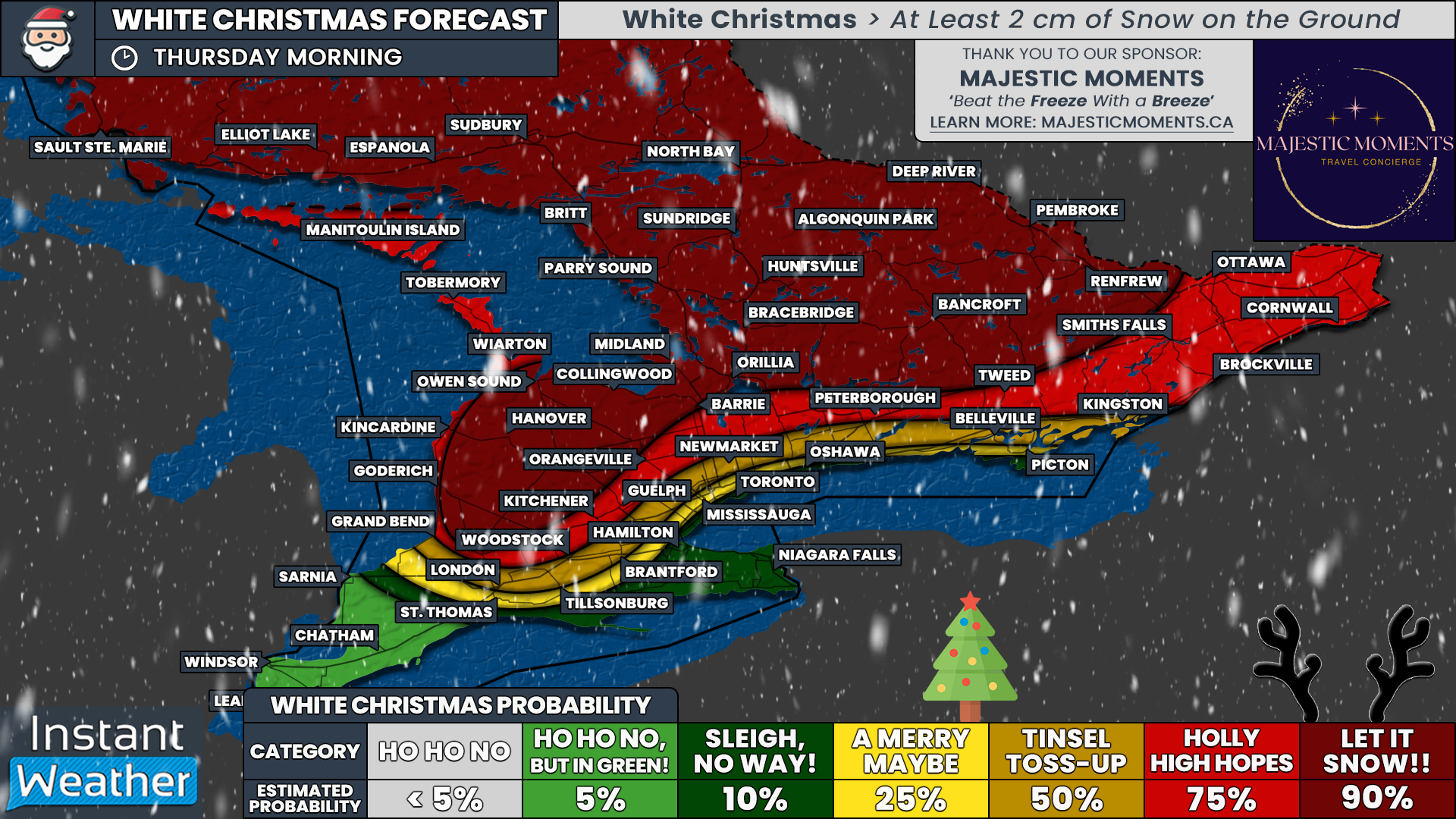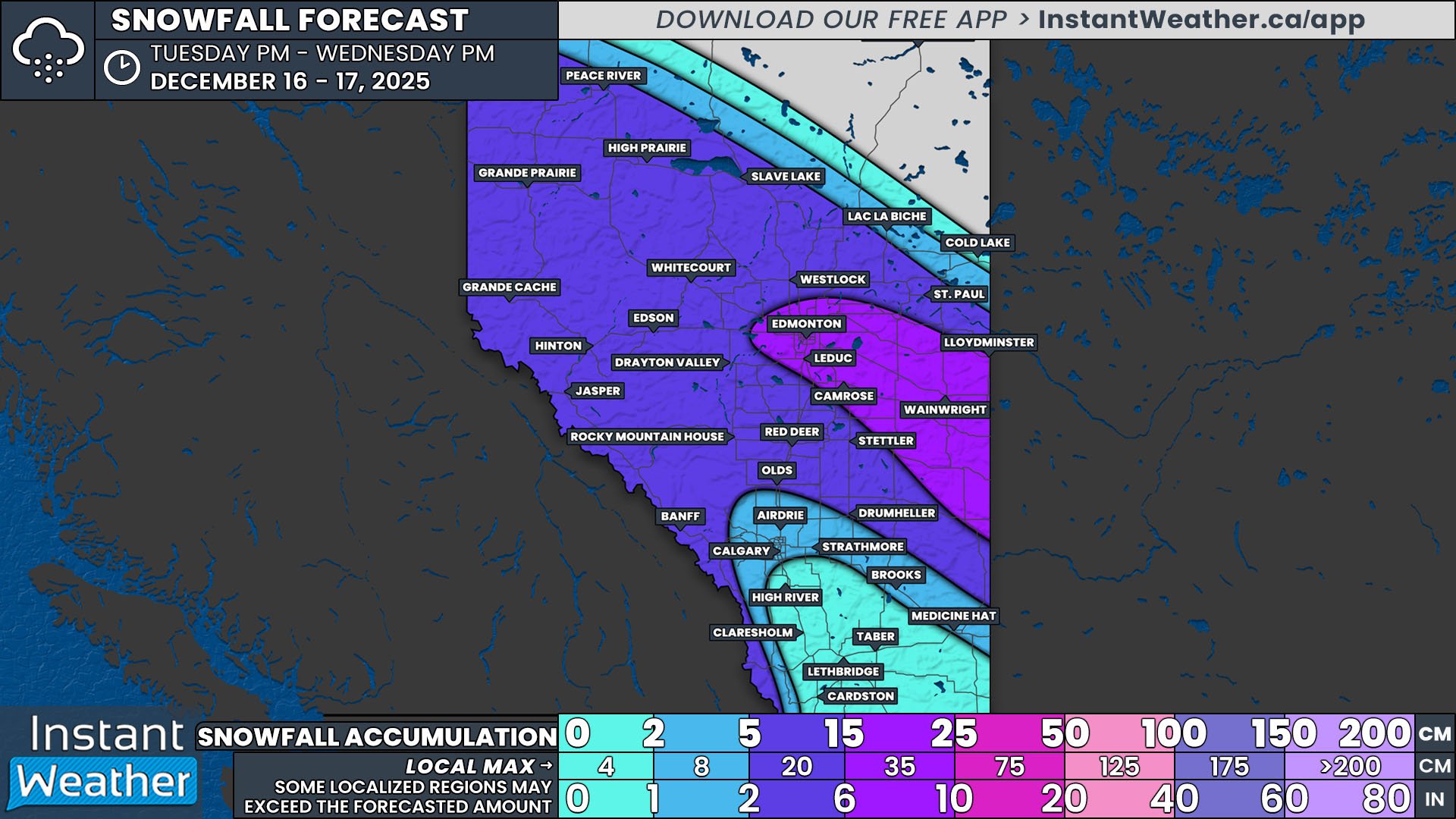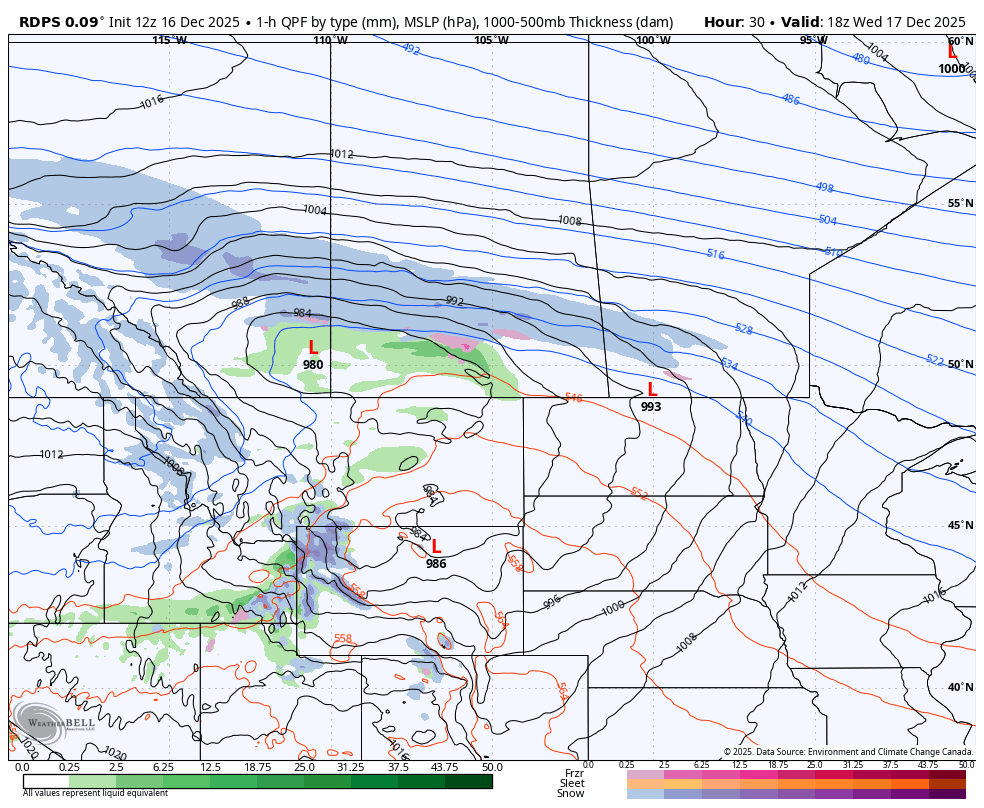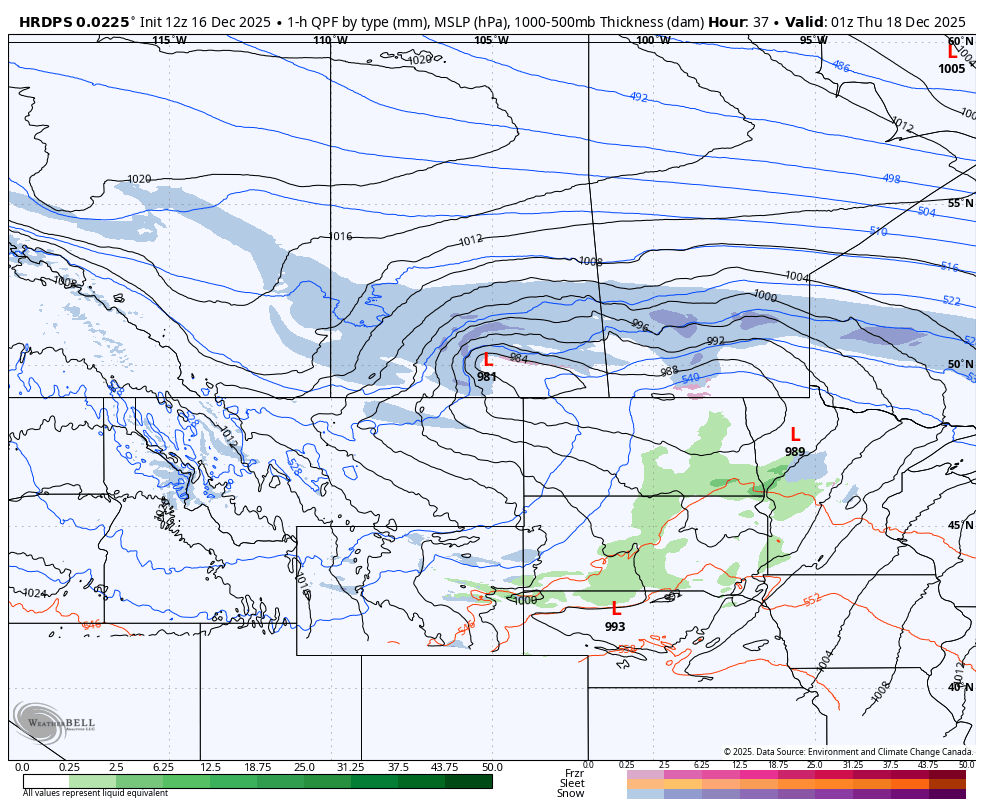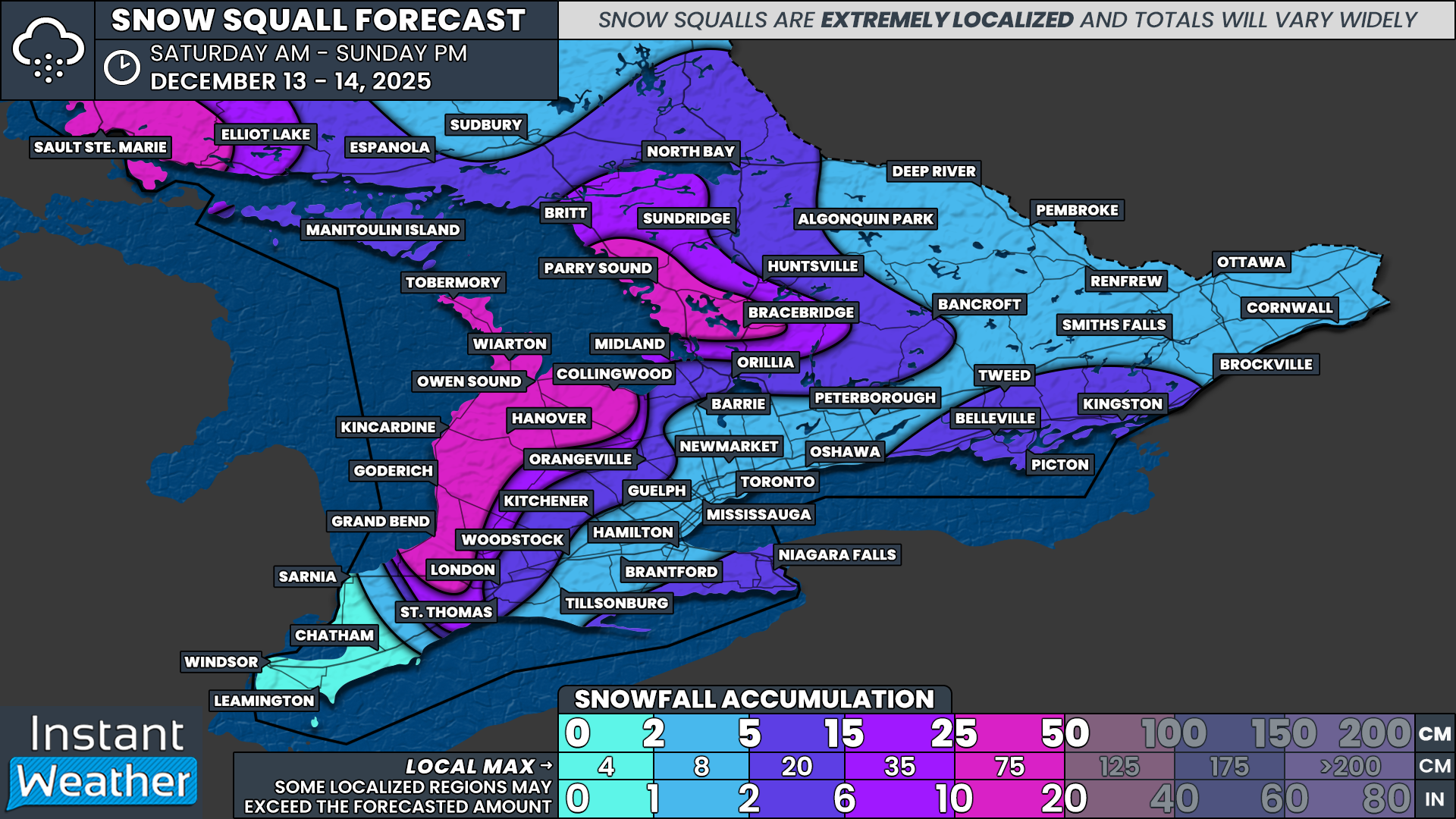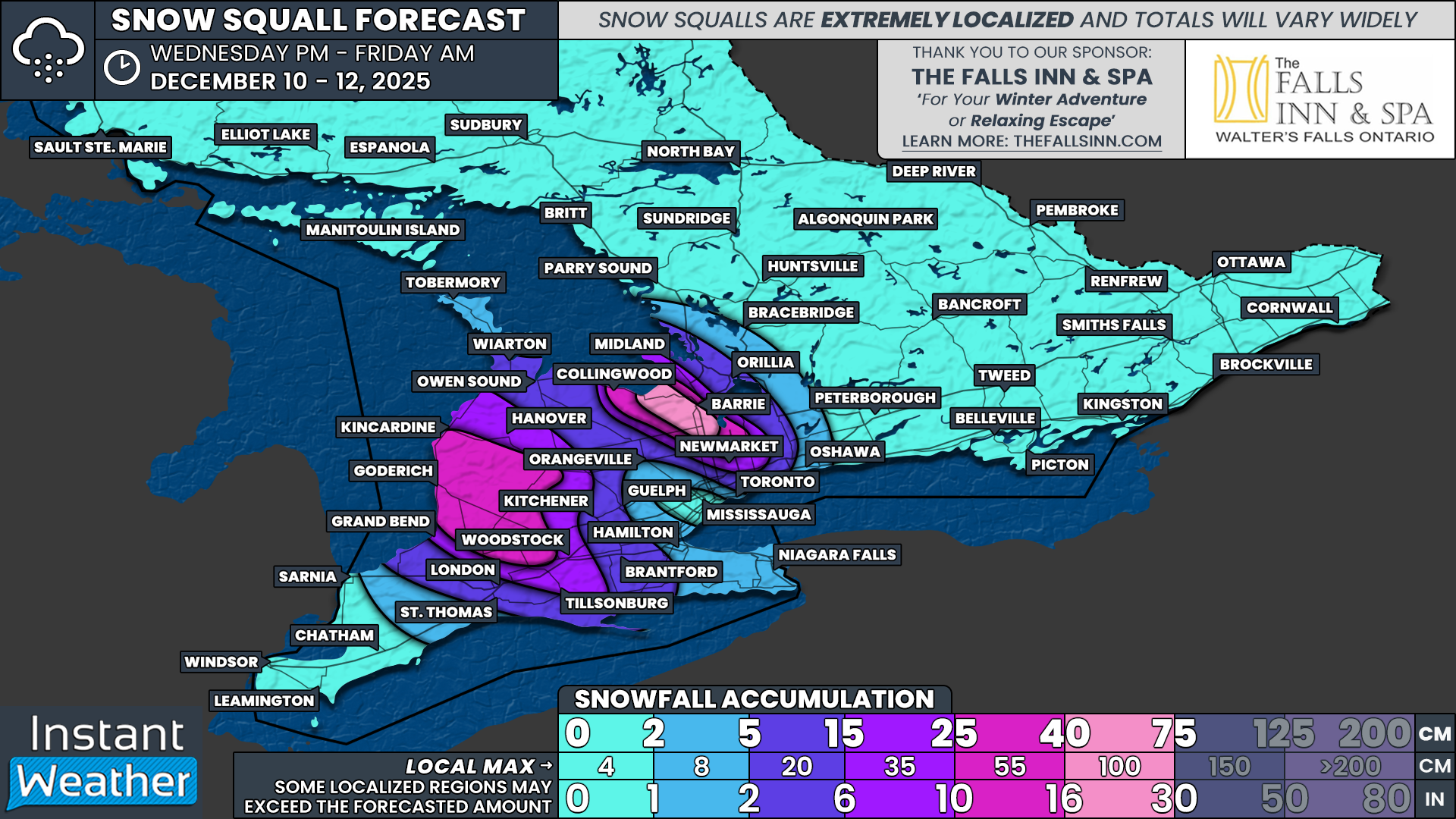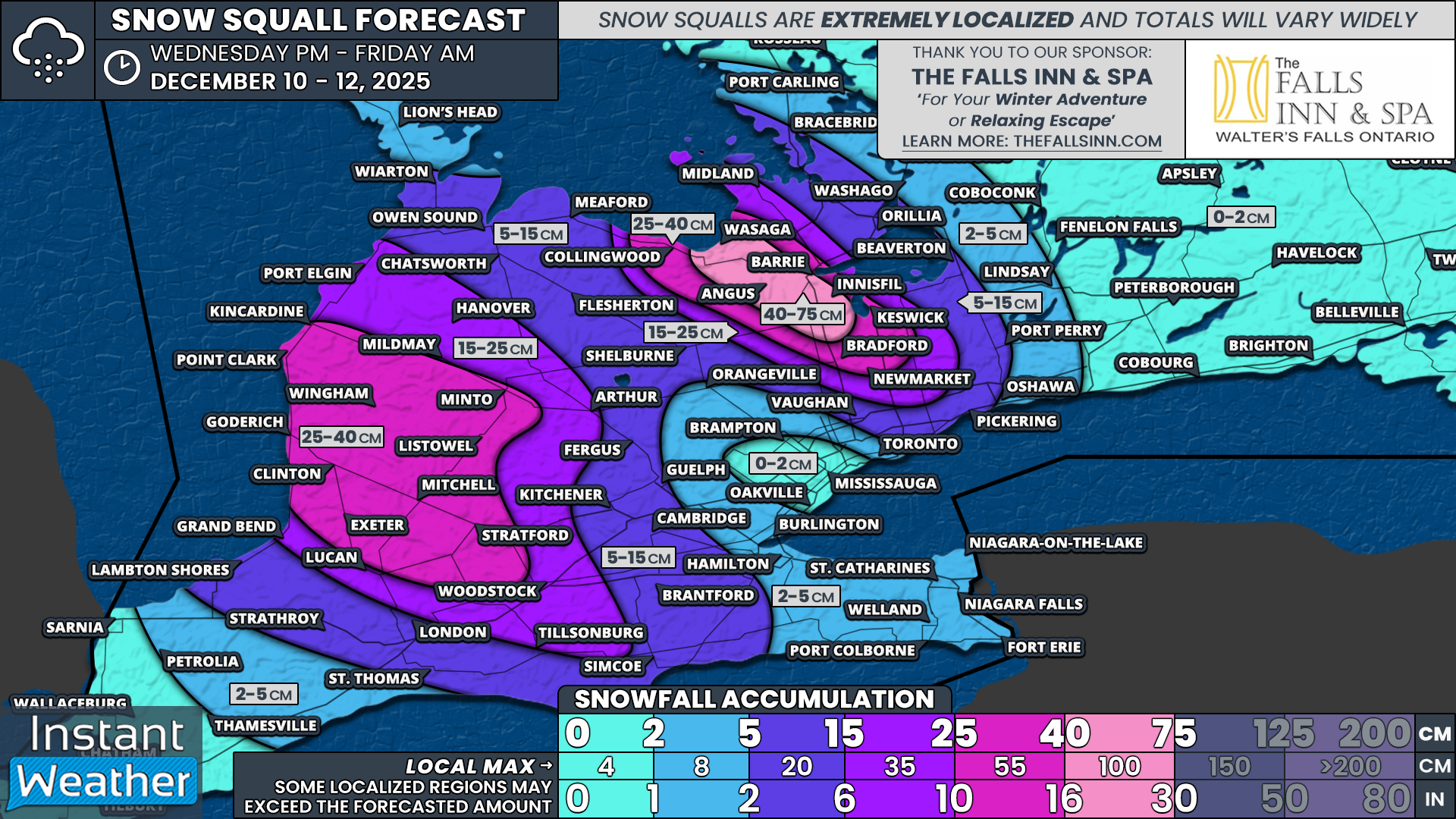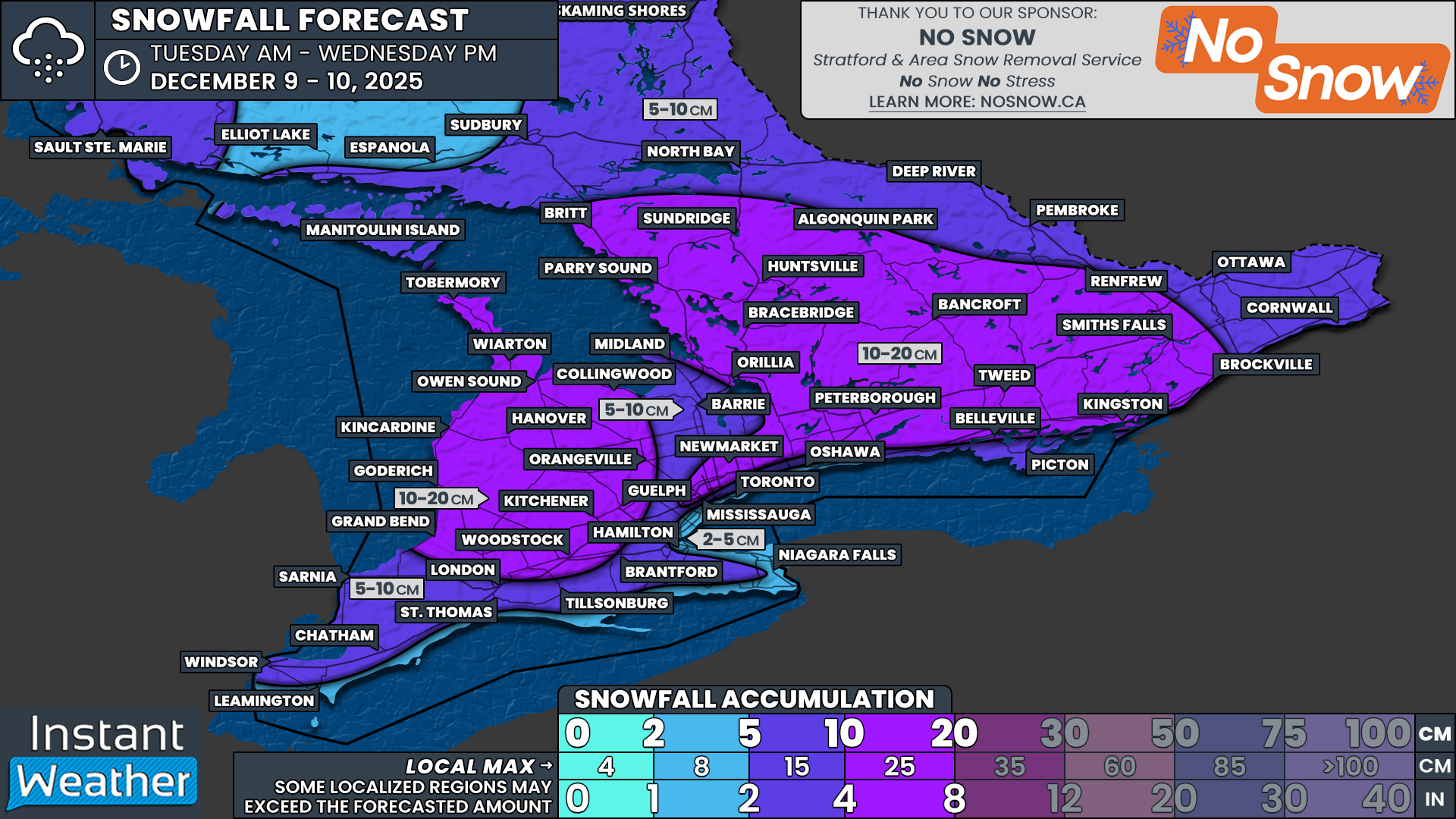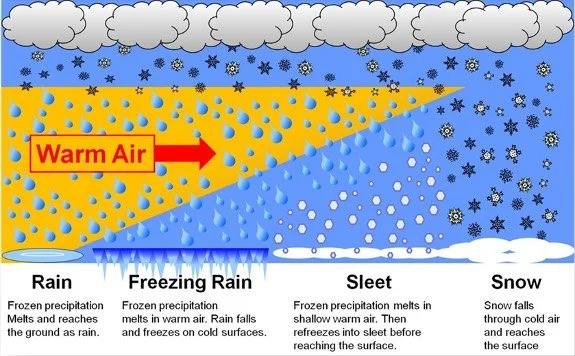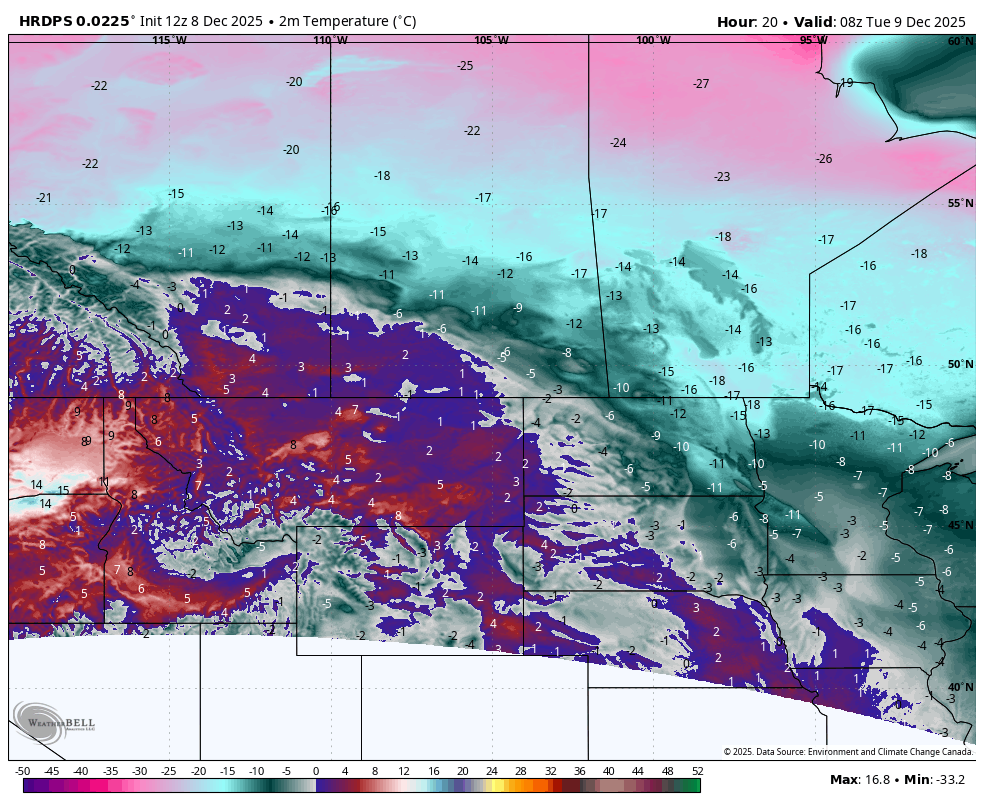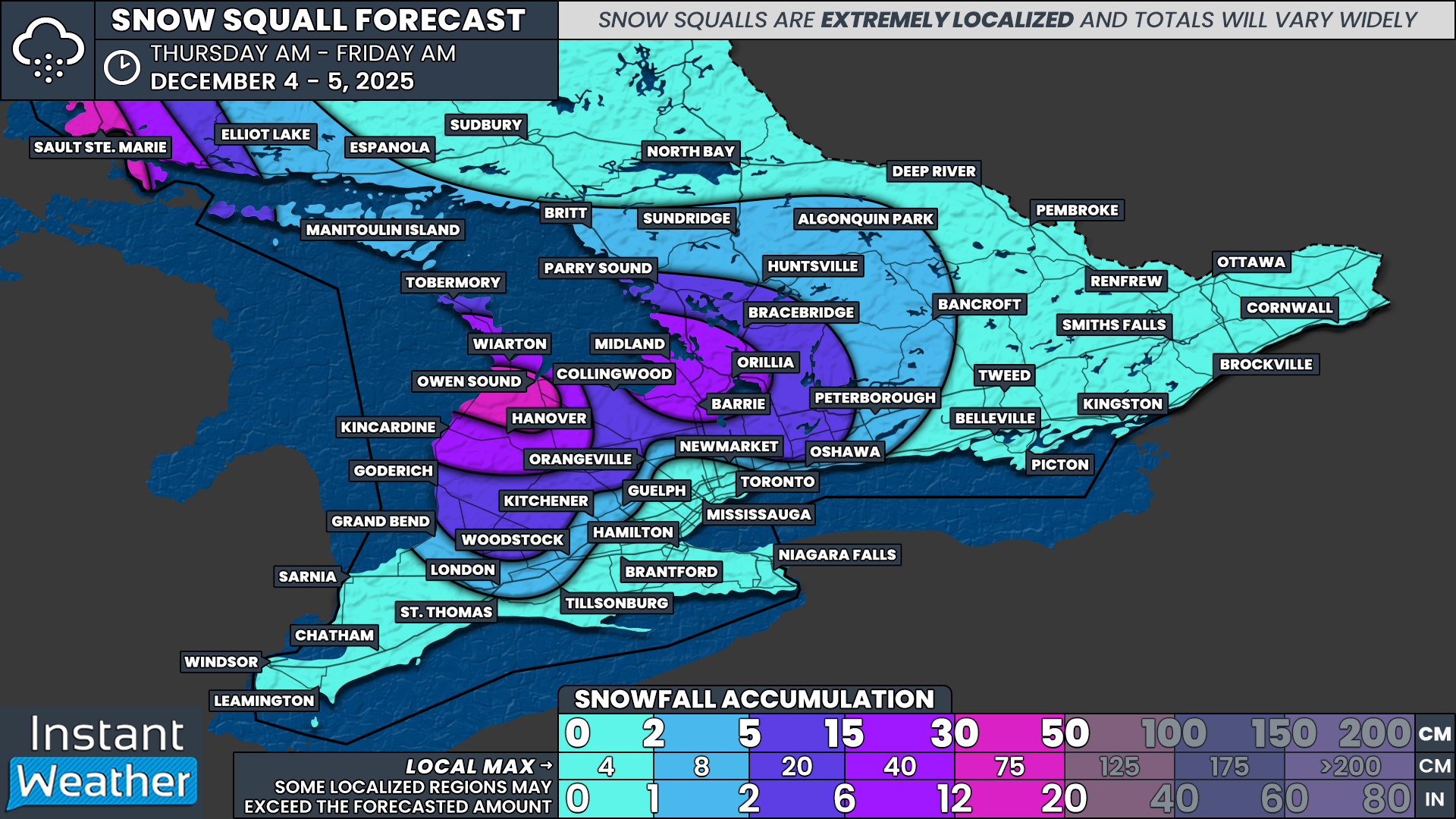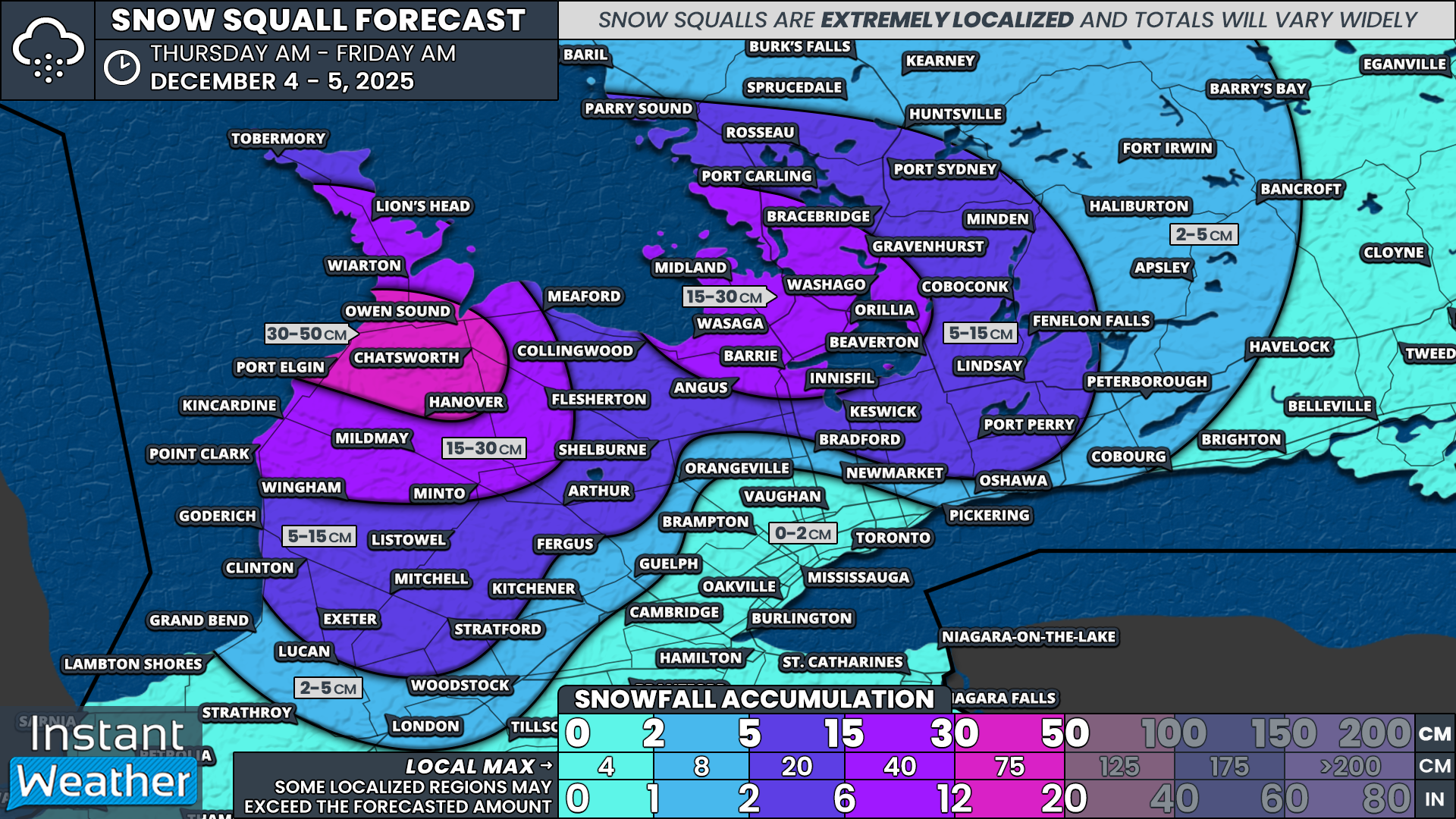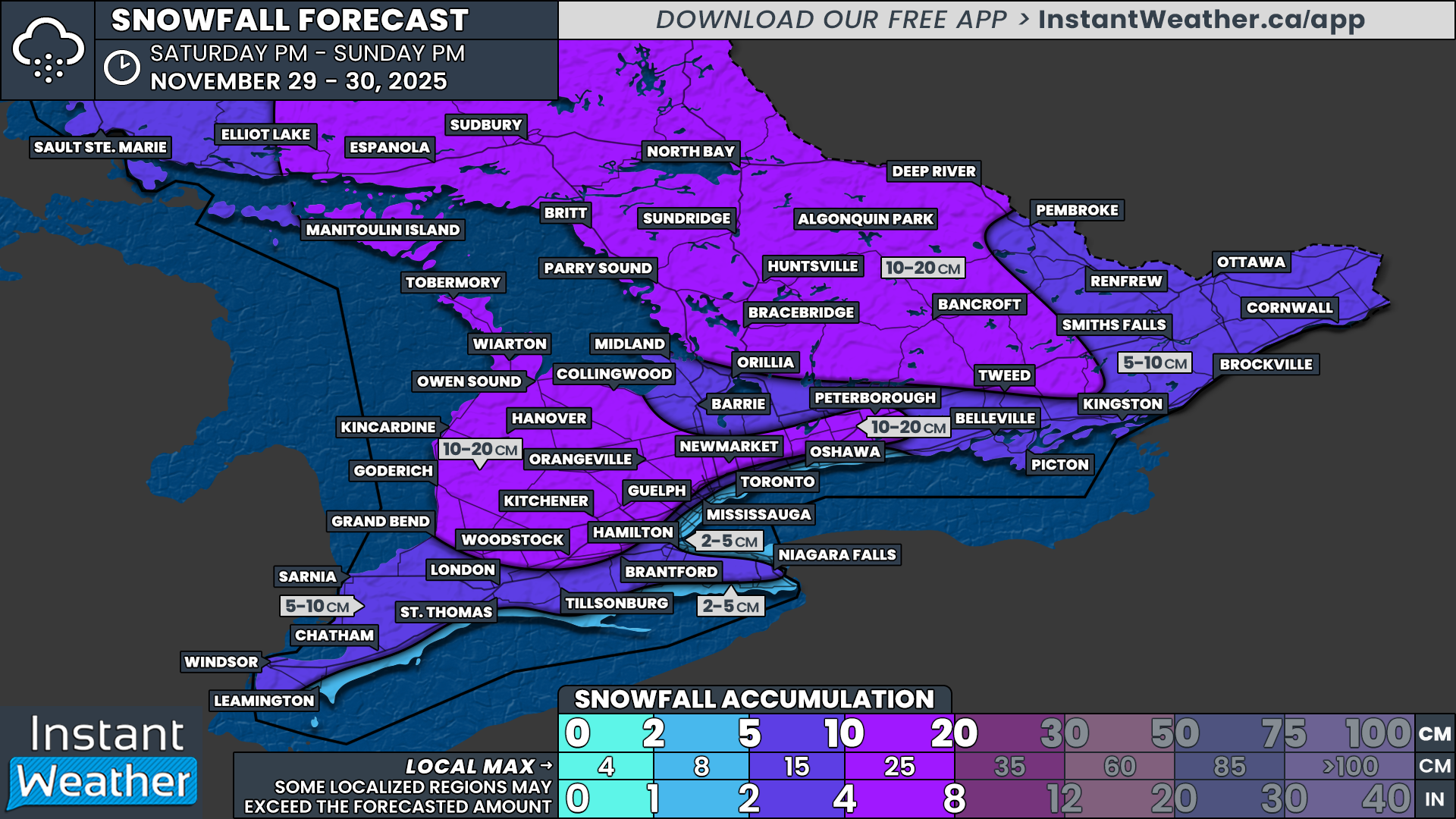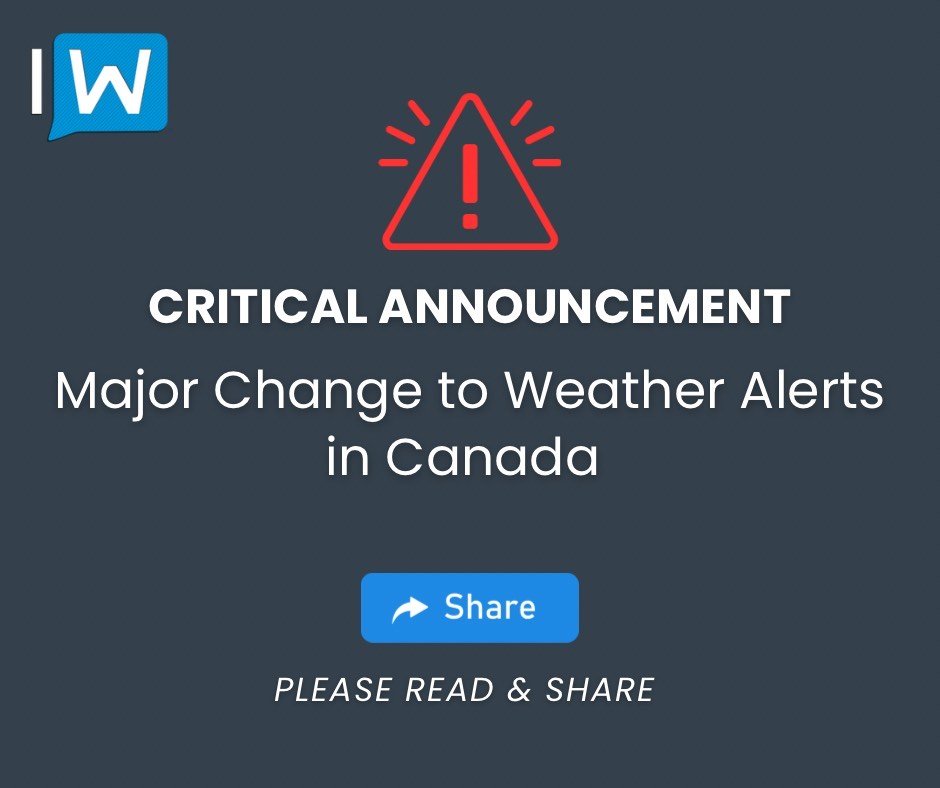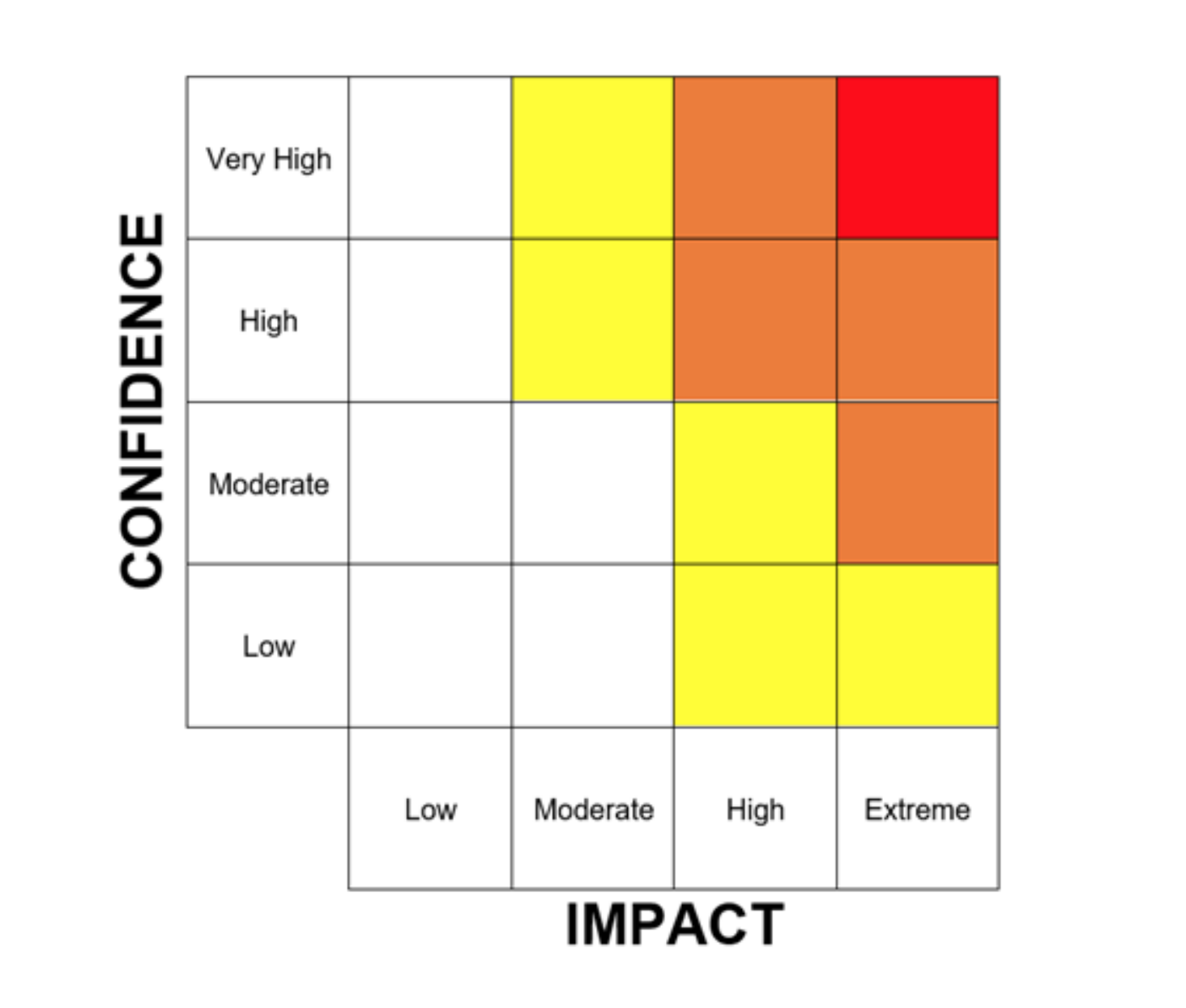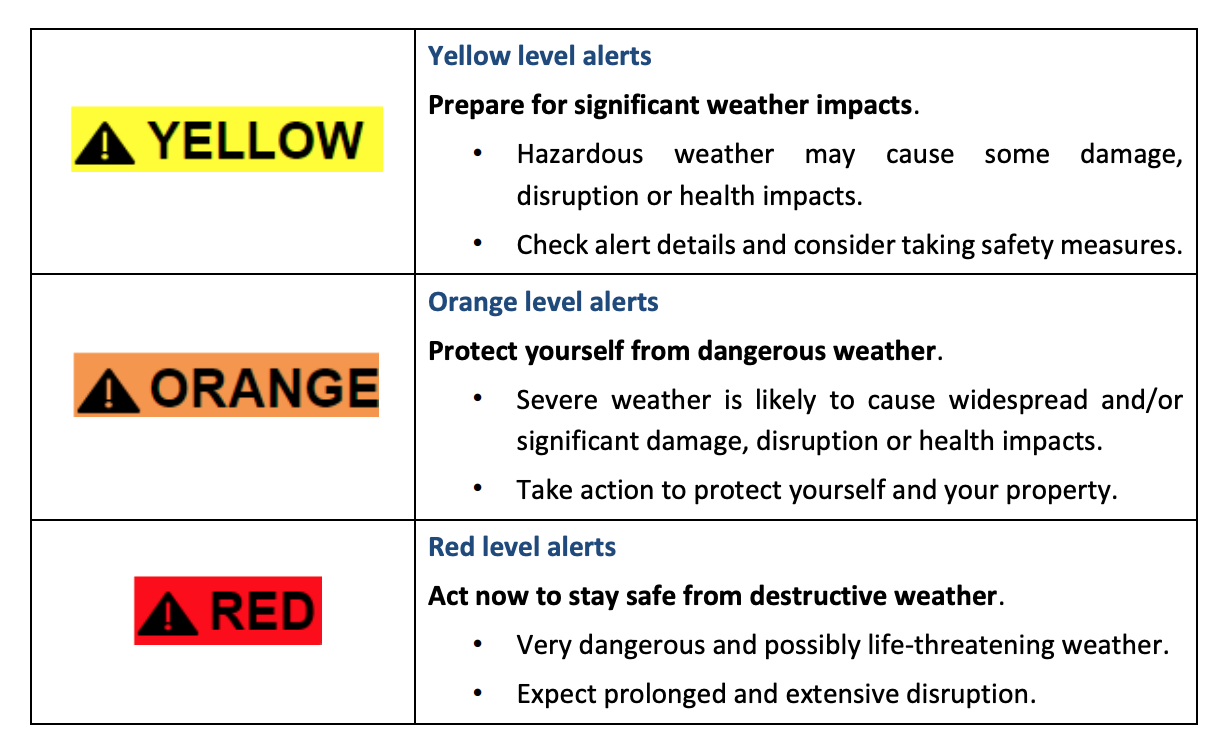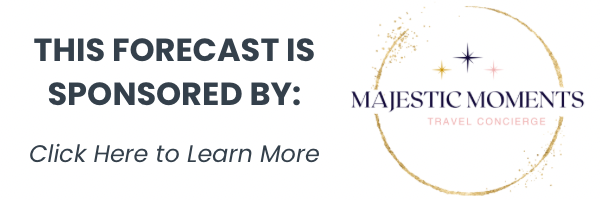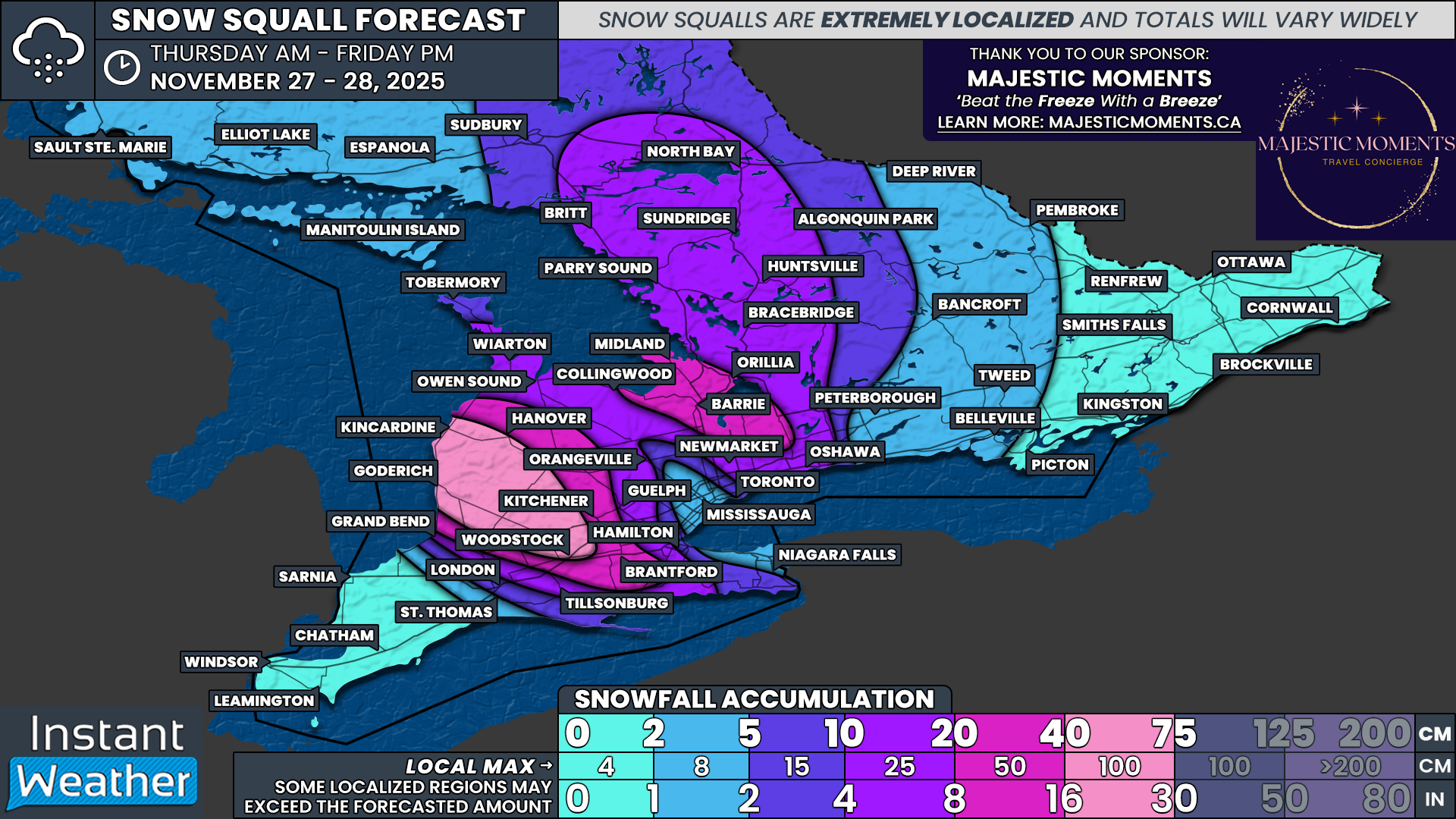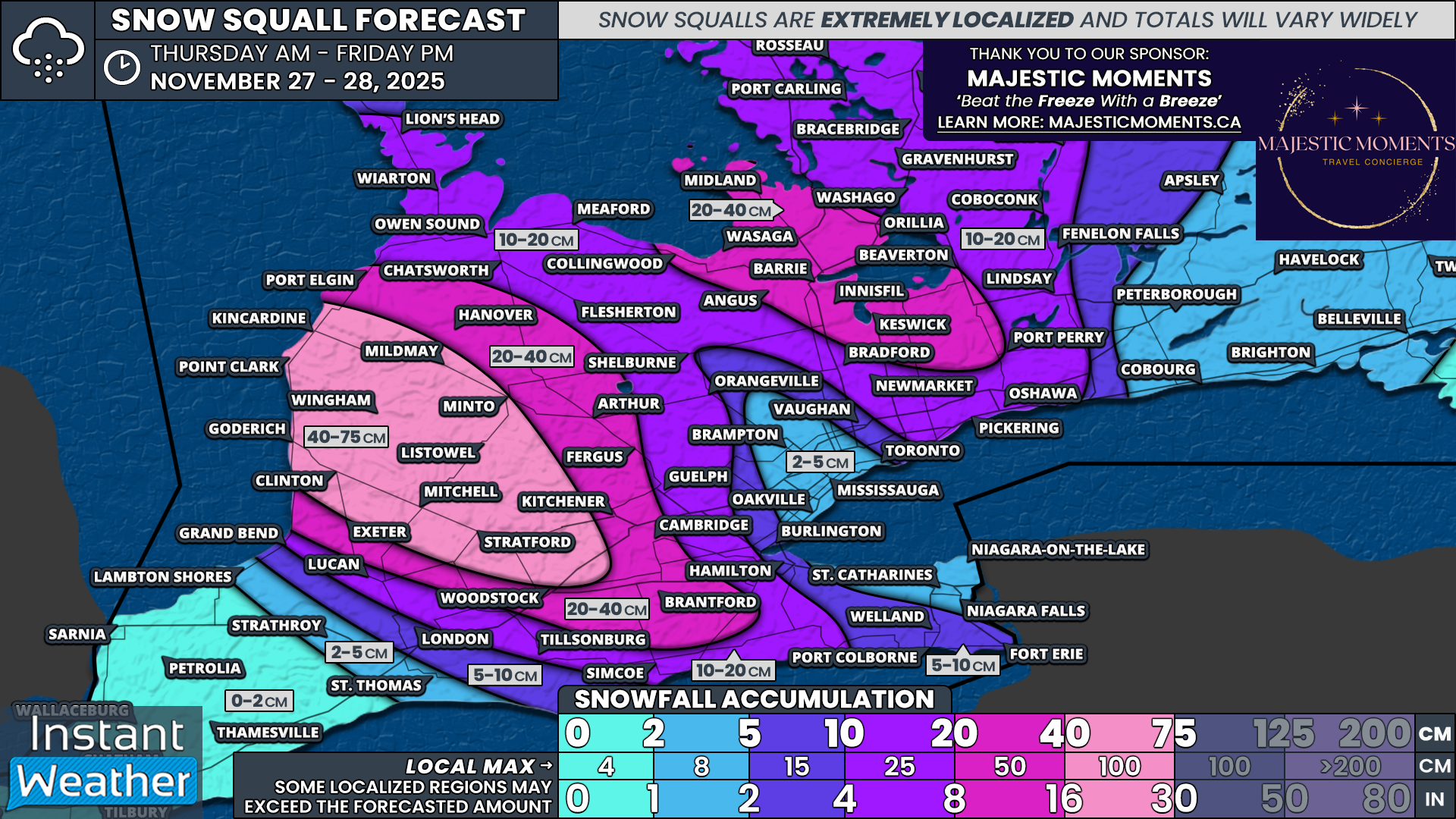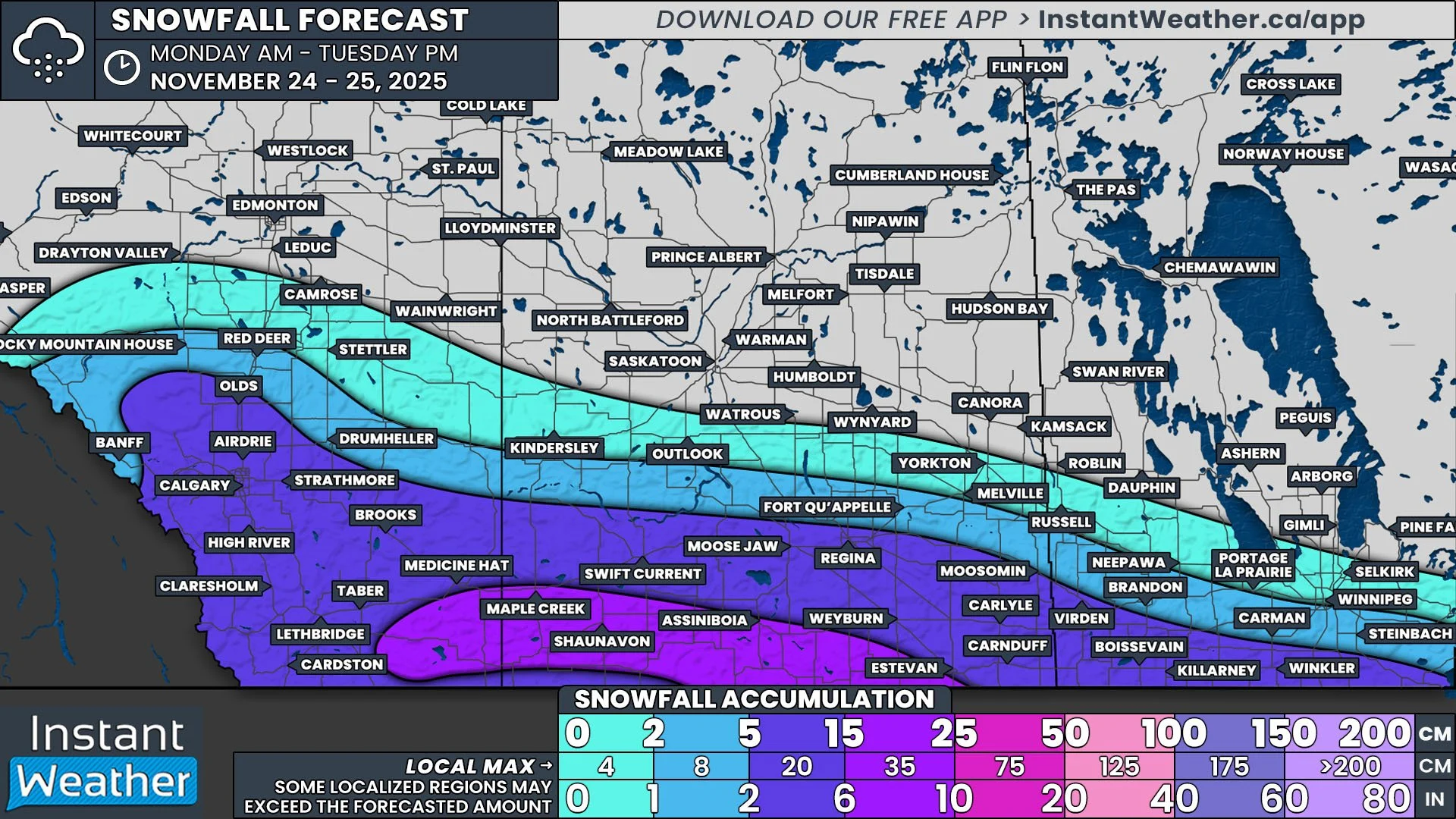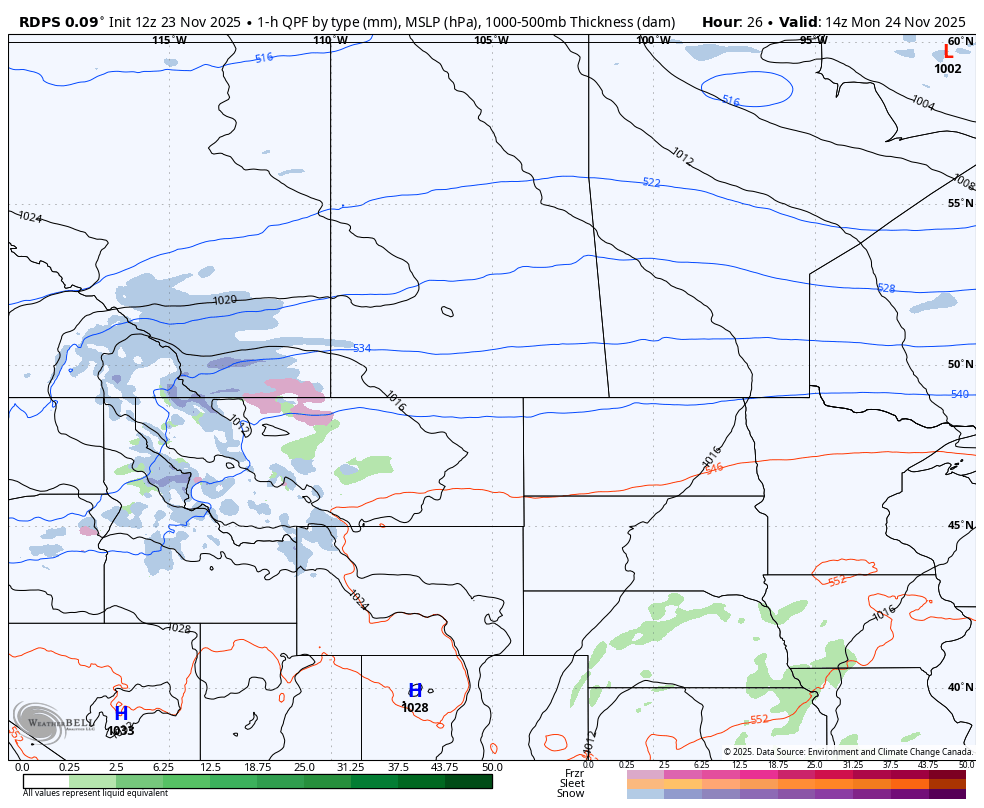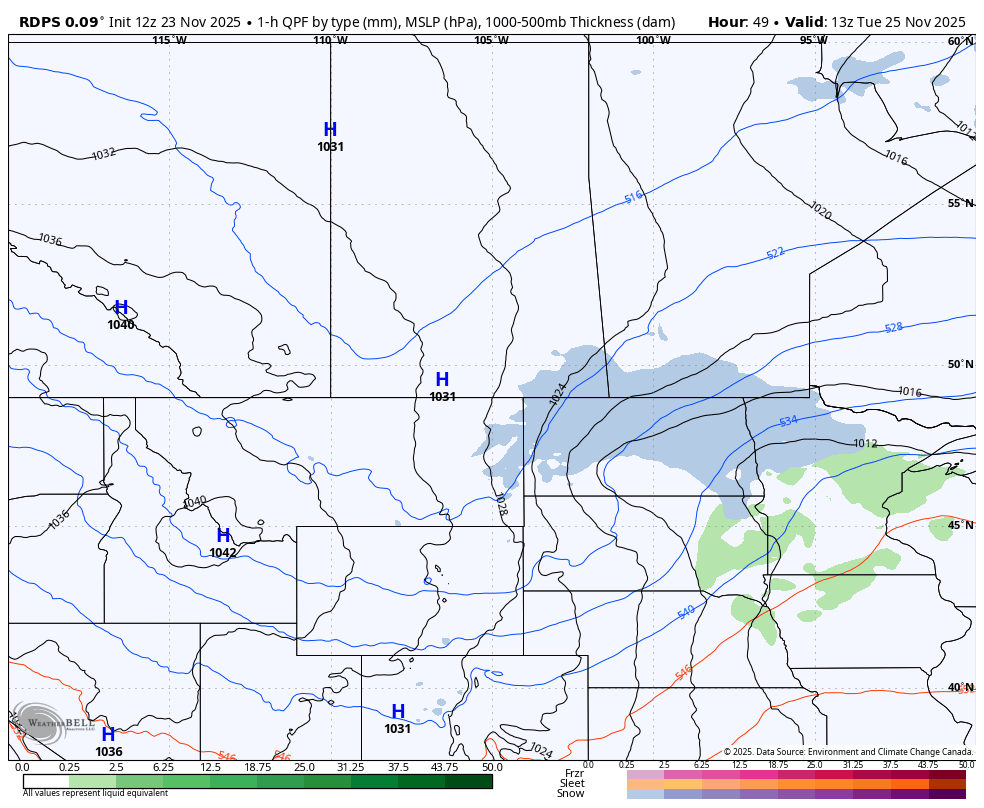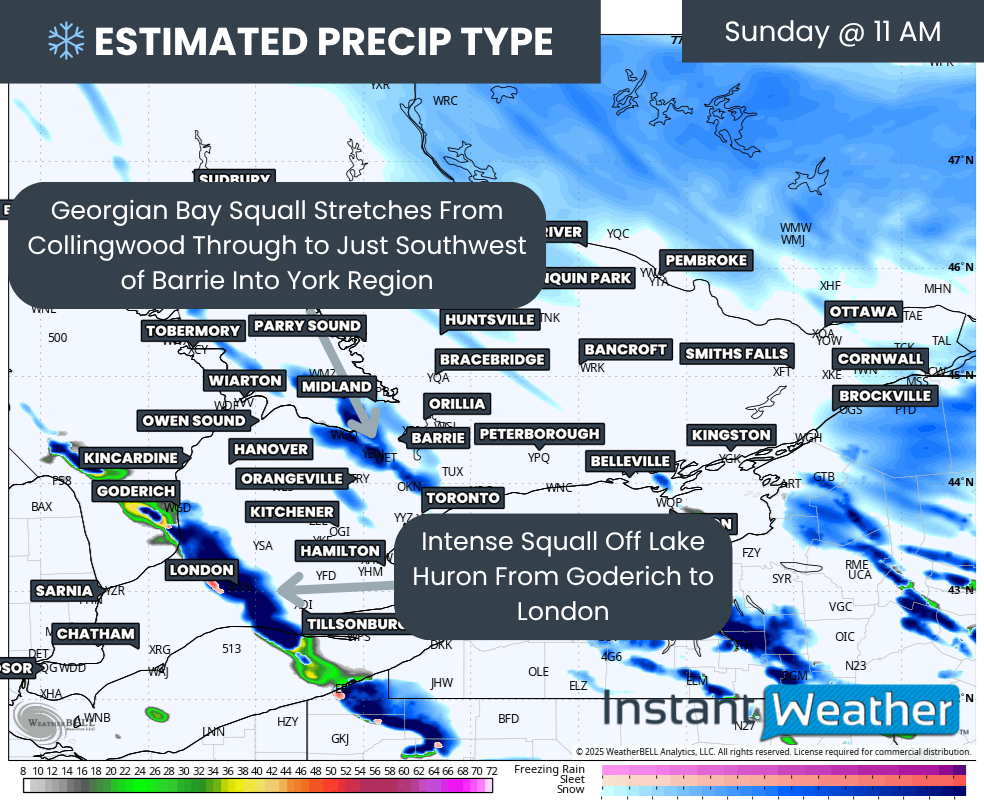Quick Blast of Heavy Snow May Impact the Morning Commute in Southern Ontario With Up to 15cm of Snow on Monday
/It has certainly been a busy start to 2026 across parts of Southern Ontario, especially in the snowbelt regions. Relentless snow squalls over the past week have brought widespread travel disruptions along with staggering snowfall totals, with some areas picking up an incredible 50 to 100cm of snow in a relatively short period of time.
While we managed to catch a bit of a break through the weekend, that quieter stretch will be short-lived. The first full week of the new year is shaping up to be an active one, with several rounds of messy winter weather expected to move through Southern Ontario over the next few days.
The next system arrives early Monday in the form of a fast-moving Alberta clipper. Unfortunately, the timing could not be much worse. With many people heading back to work and school after the holiday break, this system is expected to sweep through during the heart of the Monday morning commute.
Snow is expected to break out across Southwestern Ontario and quickly expand northeastward into Central Ontario and the Golden Horseshoe. While this will not be a major snowfall event by snowbelt standards, the intensity and timing of the snow could still cause notable travel issues.
Snowfall totals are not expected to be extreme, especially compared to what areas east of Lake Huron and southeast of Georgian Bay have been dealing with recently.
However, widespread amounts of 8 to 15cm are possible in the hardest hit regions. The key factor here is that much of this snow is expected to fall within just a few hours, which significantly increases its impact compared to a longer duration, lighter snowfall.
This clipper system is expected to move through fairly quickly, with conditions gradually improving by Monday afternoon or early evening. However, the active pattern will not take long to reload.
A second system is already lining up to arrive beginning Tuesday afternoon and continuing into Wednesday. There is still some uncertainty surrounding the exact track of this system, which will ultimately determine who sees snow, ice, or rain.
At this point, areas closer to Lake Erie and Lake Ontario appear most at risk for a period of freezing rain, potentially followed by heavy rain as warmer air pushes northward. Further north into Central and Eastern Ontario, colder air may hold on longer, leading to another round of accumulating snow with totals in the 5 to 15cm range possible.
Looking even further ahead, we are also monitoring two additional systems that could impact Southern Ontario toward the end of the week and into the upcoming weekend. Early indications suggest much of Southern Ontario may start out on the rain side of the system on Friday. However, colder air could work its way south by Saturday, allowing rain to transition back to snow.
It is far too early to pin down exact impacts, but this system will have access to a large amount of moisture. If colder air arrives sooner or proves more stubborn than currently expected, the risk for significant snowfall or even prolonged freezing rain would increase.
Hourly snowfall rates (cm) - MAP FROM WEATHERBELL
Turning back to Monday’s clipper, the first bands of snow are expected to enter Southern Ontario from the west overnight into the early morning hours. Snow should develop along the Lake Huron and Georgian Bay shoreline by mid-morning, becoming steady and occasionally heavy.
By late morning, snow will spread eastward into Central Ontario and the Golden Horseshoe. With this occurring during peak commuting hours, expect slower travel and reduced visibility, especially for those who may be easing back into winter driving after the holidays.
Blowing and drifting snow may further reduce visibility, particularly in areas east of Lake Huron where deep snowbanks are already in place. Even moderate winds will be enough to cause drifting in open areas and along rural roadways.
Hourly snowfall rates (cm) - MAP FROM WEATHERBELL
Conditions are expected to deteriorate the most by the late morning hours around Lake Simcoe and into parts of the Greater Toronto Area. During this time, hourly snowfall rates could briefly reach 2 to 3cm, which would qualify as heavy snow. This can quickly overwhelm road crews and lead to rapidly deteriorating road conditions.
As the system continues east, light snow will begin reaching Eastern Ontario while snowfall starts to taper off closer to Lake Huron. Areas along the Lake Erie shoreline and into Deep Southwestern Ontario will largely be spared from the worst of the snow, with the bulk of the moisture tracking north of these regions.
Hourly snowfall rates (cm) - MAP FROM WEATHERBELL
Snowfall intensity will gradually decrease through the early afternoon as the system moves away. Steadier snow will linger across Central and Eastern Ontario, while areas such as Kitchener and the GTA see snow slowly taper off as the system lifts north of Lake Simcoe.
Some lingering light snow could persist into the early evening hours for parts of Eastern Ontario, including areas near Kingston and Brockville, before finally coming to an end.
There is fairly strong agreement among forecast models when it comes to overall snowfall placement. Most guidance supports a swath of 10 to 15cm stretching from Grey-Bruce through Central Ontario, into the northern GTA, Peterborough, and extending eastward toward Kingston. This zone may also extend into parts of southern Northeastern Ontario.
For our forecast map, we have opted to lower the top range slightly to 8 to 15cm rather than a more aggressive 10 to 15cm. This accounts for the possibility of some underperformance near the southern edge of the snow band, especially through parts of Toronto. Clippers are notorious for sharp gradients and occasional dry slots, which could keep totals lower in some locations.
Across the Goderich to Kitchener and Hamilton corridor, snowfall amounts of 5 to 8cm look reasonable. That said, if the system ends up being drier than expected, some locations may struggle to reach the 5cm mark.
Further south into Sarnia, London, and the Niagara Region, amounts should generally stay below 5cm. Windsor and Leamington may see little more than a trace, if any snow at all.
In the Ottawa Valley, northern sections closer to the Quebec border, including Pembroke, Ottawa, and Cornwall, are expected to see around 2 to 5cm. Areas further south, such as Bancroft, Smiths Falls, and Brockville, could pick up closer to 5 to 8cm.
Some recent model runs have hinted at heavier snow pushing a bit further north in Eastern Ontario, so the potential for localized overperformance cannot be ruled out.
PRECIP TYPE - MAP FROM WEATHERBELL
Once snow winds down Monday evening, conditions will briefly improve before the next system approaches. Current guidance suggests a messy and complex setup developing Tuesday afternoon and lasting into Wednesday.
Unlike the clipper, this system will involve a stronger battle between warm and cold air. This raises the risk for a band of freezing rain to set up somewhere across Southern Ontario, at least for a few hours.
At this point, it looks like a lower-impact freezing rain scenario where areas transition from freezing rain to plain rain as warmer air moves northward. However, higher resolution models are only just coming into range, and it is possible that the cold air proves more stubborn than currently expected.
As the system exits overnight into Wednesday, a broader area of heavier snow could develop across Northeastern, Central, and Eastern Ontario. Where this snow band ultimately sets up remains uncertain, but snowfall amounts in the 5 to 15cm range are possible.
We will have a much clearer picture of that system once Monday’s clipper moves through and we can assess how the atmosphere responds.
Beyond that, yet another round of unsettled weather is possible toward the end of the week and into the weekend. While heavy rain currently looks like the main concern, colder air arriving sooner could flip the script toward heavy snow. This remains highly preliminary, but it reinforces the message that winter is not easing up anytime soon.


